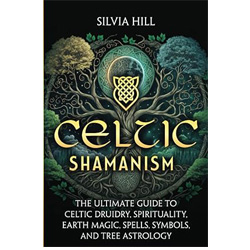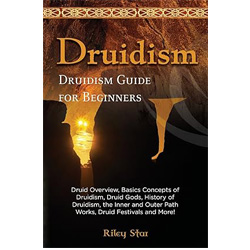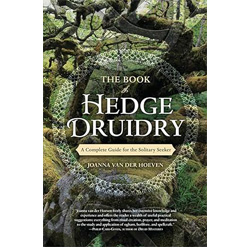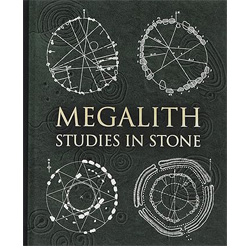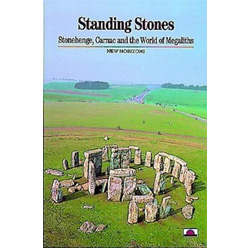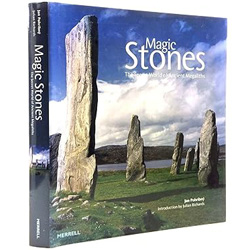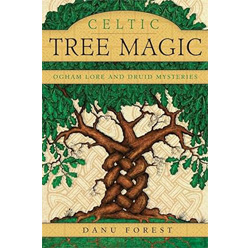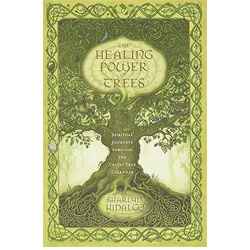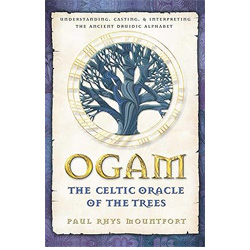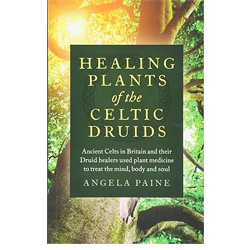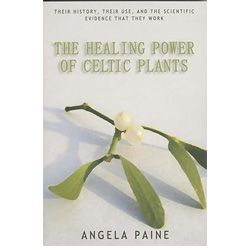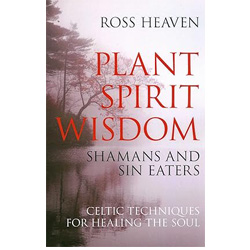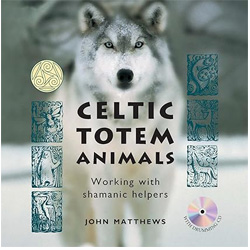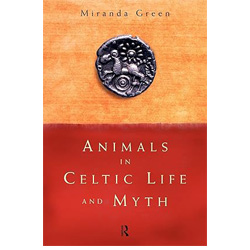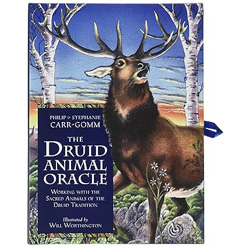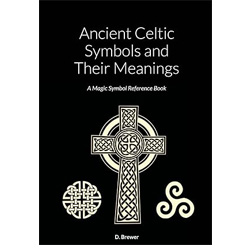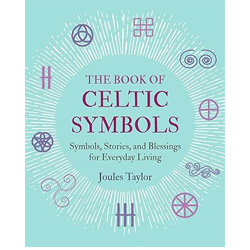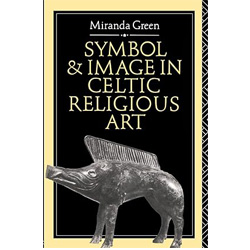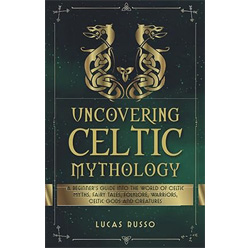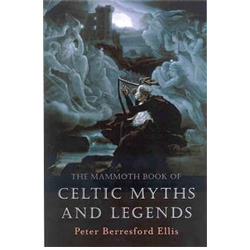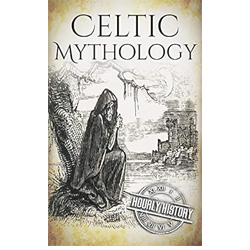- Jewelry
- Inspiration
- Our imagination
- Birthstones
- Celebrating with Eternal Flowers
- Druids and druidesses
- Flower meanings
- History, archeology jewelry
- History and healing properties of metals
- History and healing properties of stone
- Illumination jewelry
- Japanese symbols
- Maya calendar jewelry
- Stone color symbolism
- Stones catalogue
- Wedding anniversaries
- Searches a theme on the site
- Good Deals
- Paintings
- About
- Contact
JEWELRY
- Anklet
- Bracelets
- Brooches
- Cufflinks
- Earrings
- Pendants & Necklaces
- Rings
- Draw your jewelry
- How to clean your jewel
- Metal we used
INSPIRATION
- Our imagination
- Birthstones
- Celebrating with Eternal Flowers
- Druids and druidesses
- Flower meanings
- History, archeology jewelry
- History and healing properties of metals
- History and healing properties stones
- Illumination jewelry
- Japanese symbols
- Maya calendar jewelry
- Stone color symbolism
- Stones Catalogue
- Wedding anniversaries
- Searches a theme on the site
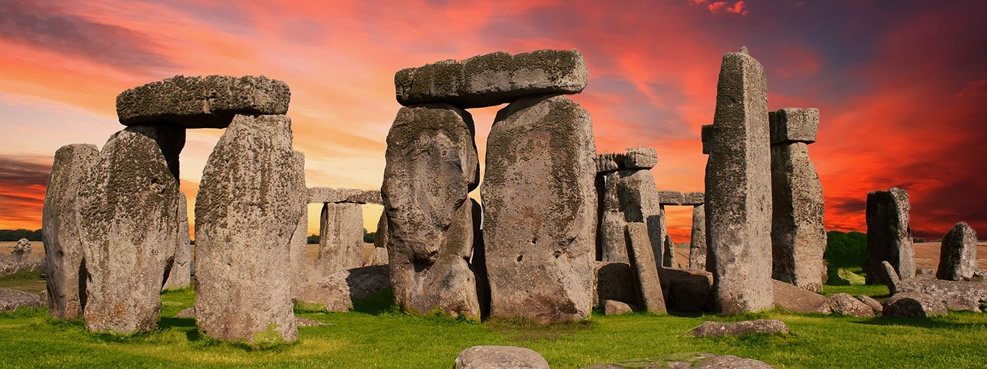
Druids and druidesses: communion with nature
If druids and druidesses hold a special place in our inspiration, it is not solely due to their association with the Celtic world. It is primarily because of the profound connection and communion with nature that they symbolize, as well as the significant and natural role of women, which has too often been erased from history, as in many historical cultures.
The unique place attributed to druids and druidesses in our inspiration for jewelry design goes far beyond their mere affiliation with the Celtic world. It primarily stems from the deep connection and sacred communion with nature they embody. Beyond their role in ancient traditions, they symbolize the primordial bond between humans and their environment, a connection often forgotten in our modern world.
It is also a tribute to women and their essential role, too often overlooked in historical accounts and past cultures. Druidesses represent a powerful feminine force, an embodiment of the wisdom and power of nature, deserving of celebration and honor.
Our jewelry draws inspiration from this timeless connection between humanity and the earth, embodying both the raw beauty and the quiet strength of nature, as well as the spiritual and cultural richness of the women and men who represent it.
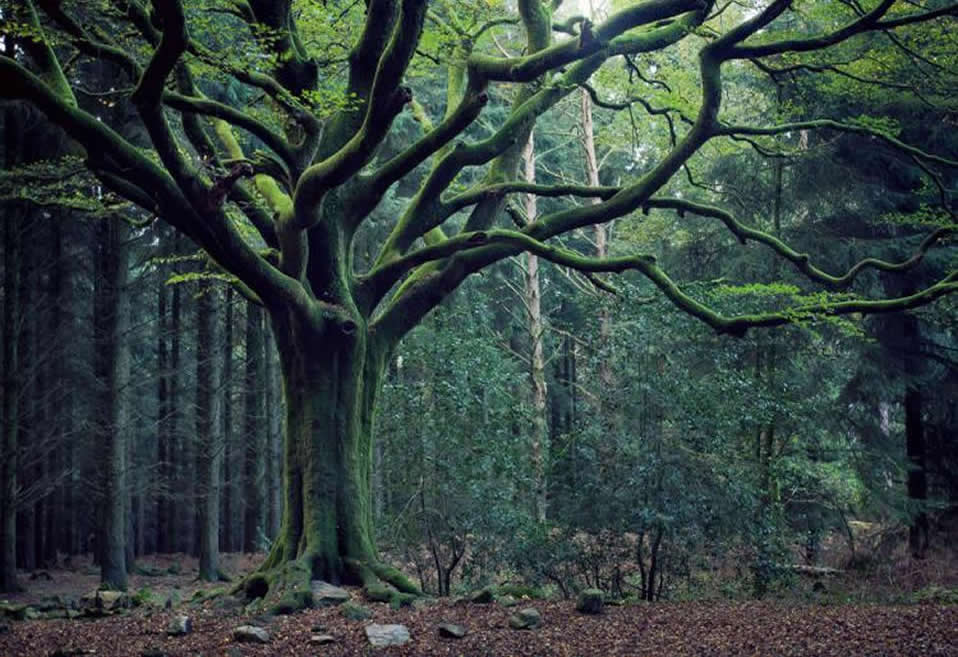
The legacy of the druids, and more specifically of the druidesses, is of paramount importance, as it rests on tangible historical foundations. Through literary sources and ancient narratives, we gradually perceive the depth of their knowledge and the significance of their role—elements that are now being reexamined and rehabilitated.
Similarly, the shamanic traditions attributed to women in various cultures around the world offer a valuable heritage. From Indigenous American cultures to Asia, these female shamans embodied a sacred link between humans and the spiritual and natural forces that animate our universe, just like their male counterparts. Their practices, knowledge, and wisdom were essential for maintaining the balance between humanity and nature, and for guiding their communities toward health, wisdom, and harmony.
By exploring and honoring these legacies, we not only acknowledge the richness of cultural diversity but also the importance of preserving and valuing ancestral knowledge that continues to nourish our understanding of the world and our connection to the earth.
Who and what is a druid?
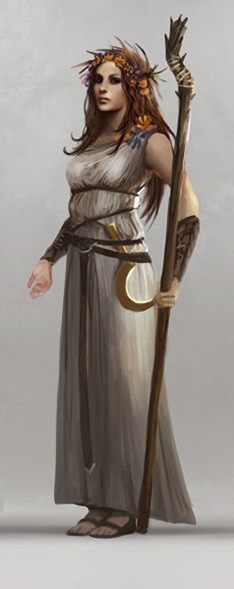
The druid occupies a prominent place in Celtic society as a multifaceted spiritual leader. Embodying a blend of roles, he is both a religious scholar, a profound philosopher, a guardian of ancestral knowledge, a chronicler of history, an expert in law and justice, and a top strategic advisor to kings. At times, he even took on the role of warrior, protecting his community not only through wisdom but also through strength.
Endowed with divinatory gifts, the druid scrutinized the signs of nature and interpreted omens with meticulous attention. This role as an interpreter of the invisible world was crucial in making collective decisions, whether concerning war, harvest, or religious rituals. As a sacred intermediary between the gods and humans, the druid represented the vital link between the divine world and the earthly realm. He invoked the forces of nature and ancestral spirits to guide and protect his community, ensuring harmony between the two spheres.
In this rich Celtic tradition, female druidesses also played a leading role. Although they were sometimes relegated to the background by male-dominated historical accounts, their influence was undeniable. They often shared the same skills and responsibilities as their male counterparts, serving as guardians of ancient wisdom, divination mediums, and respected advisors within society. Their presence underscores gender equality in certain aspects of Celtic life, providing a powerful testament to the strength and diversity of female leadership in ancient history.
Sadly, druids did not place their faith in writing. Their beliefs and knowledge were not recorded but passed down orally from generation to generation. This oral transmission, while rich and vibrant, has unfortunately suffered from deterioration and loss over time. Thus, we often rely on indirect sources, primarily accounts written by Greeks and Romans, to understand the role and practices of the druids. However, the flood of misinformation and fanciful tales, amplified by the Internet age, further complicates our quest for truth about these guardians of Celtic wisdom, sometimes drowning reality under an ocean of speculation and false representations.
Due to his privileged relationship with the divine, the druid wielded unquestionable authority over everyone, including kings. He orchestrated sacred rituals and presided over religious ceremonies, often accompanied by sacrifices. As war advisors, they provided strategic expertise to leaders in conflicts and military decisions.
Celtic religion was deeply rooted in sacred respect for nature. The Celts believed in the immortality of the soul and reincarnation, considering the possibility that the soul might reincarnate into plants or animals before returning to human form. Some branches of druids adopted vegetarian practices and rejected bloody rituals, such as sacrifices, in favor of a more peaceful and life-respecting approach.
We wish to emphasize that our expertise on the Celtic people may be limited. To develop this article, we conducted extensive research by consulting a variety of sources. Among these, we particularly recommend the use of the Celtic tree for the quality and critique of sources. Given the complexity and diversity of historical accounts and contemporary interpretations, we also encourage our readers to explore multiple perspectives and cross-reference information to obtain a more comprehensive and nuanced view of Celtic culture.
While we strive to provide accurate and reliable information, we acknowledge that there is always a degree of uncertainty and debate surrounding some aspects of Celtic history and culture. We therefore encourage our readers to apply their critical thinking and pursue their own research to deepen their understanding of this fascinating subject.
To learn more about druid, we recommend you the following books:
The mysterious origins of druidism
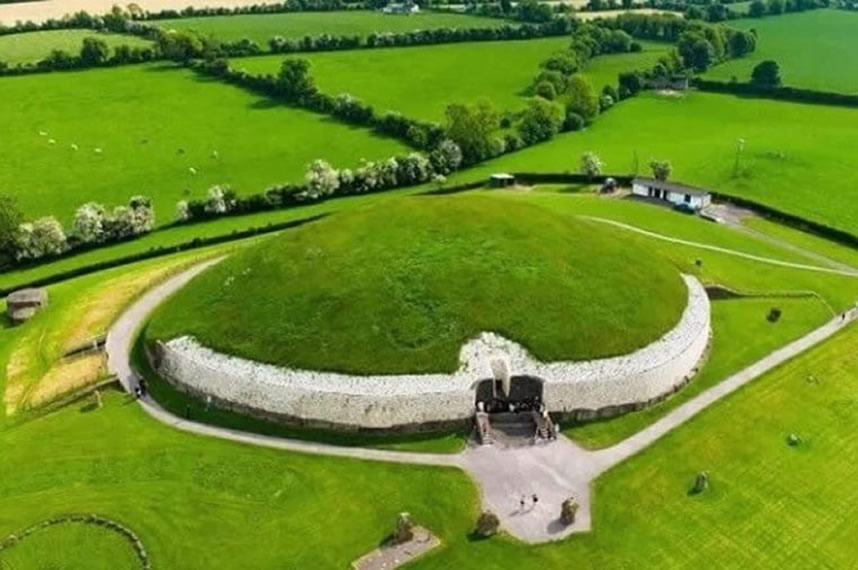
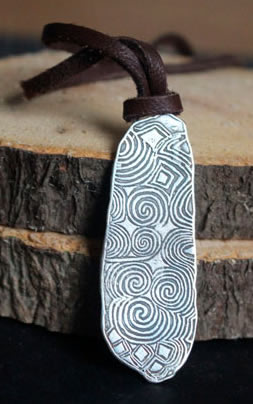
The enigmatic origins of the druids spark numerous theories, each shrouded in mystery. We favor the hypothesis of an ancient origin, tracing back to the Neolithic era, a fascinating time of megaliths.
The megaliths themselves are impressive monuments, silent witnesses of a distant past, whose significance and methods of construction remain enigmas. These dolmens and menhirs, scattered across Europe, are steeped in mysteries that fuel our imagination.
Among these enigmatic monuments, some display astonishing sculptures and engravings, the meaning of which remains largely obscure. Yet, they seem to evoke elements of nature and celestial phenomena, themes that resonate with the motifs found in various creations in our shop.
Moreover, these megalithic structures, in some cases, reveal an advanced understanding of astronomy, with their precise alignments and early traces of calendars, as seen at the Cairn of Gavrini or the famous site of Stonehenge.
Our exploration has extended to the mysterious anthropomorphic steles of the Neolithic, fascinating sculptures meticulously carved from massive stone blocks. These representations, among the earliest of humanity, captivate with their details and evocative forms.
These steles offer a fascinating glimpse into the earliest known human representations, highlighting the unique role of women. A remarkable example is the menhir of the Lady of Saint-Sernin, which we have chosen to feature on our site for its symbolic importance and connection to our cultural heritage.
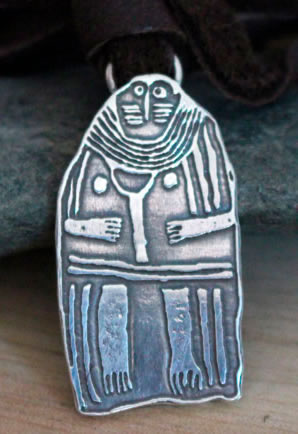
Imagining this distant era, we envision a continuity between these early artistic expressions and the astronomical, and perhaps even botanical, knowledge of Neolithic peoples. It was a crucial time when humanity began to understand and interact more deeply with its environment, gradually establishing a nascent communion with nature.
Through these ancient artifacts, we perceive the beginning of a human quest to master and understand the world around us—a spiritual and intellectual journey that still resonates today in our fascination with the mysteries of nature and the universe.
Some historians and archaeologists suggest that druidism may have been significantly influenced by Bronze Age cultures, which succeeded the Neolithic peoples in Europe. During this period, significant changes occurred in social, economic, and religious structures, marked by increased use of metal, expanded trade networks, and more complex spiritual beliefs.
Druids, as central figures in Celtic society, might have absorbed these older beliefs, gradually transforming them into a more structured and sophisticated religion. This evolution would have incorporated ritual practices and knowledge inherited from Neolithic societies while adapting to the needs and realities of the Bronze Age.
This druidic religion, enriched by millennia of accumulated knowledge, would have been characterized by extensive understanding of nature, astronomy, and medicine. For example, druids might have continued the art of observing solar and lunar cycles, crucial for agriculture and religious ceremonies. They might also have developed medical skills, using medicinal plants to treat ailments and interpreting signs from nature as divine messages.
By integrating elements from Bronze Age cultures, druids would have contributed to a unique synthesis of spiritual traditions and practical knowledge, creating a complex cosmology that closely linked the human world, the divine realm, and the natural forces surrounding them. This process of assimilation and transformation would have allowed druidism to deeply root itself in Celtic culture while preserving a continuity with ancient Neolithic traditions.
To learn more about megalithic, we recommend you the following books:
Druids and astronomy
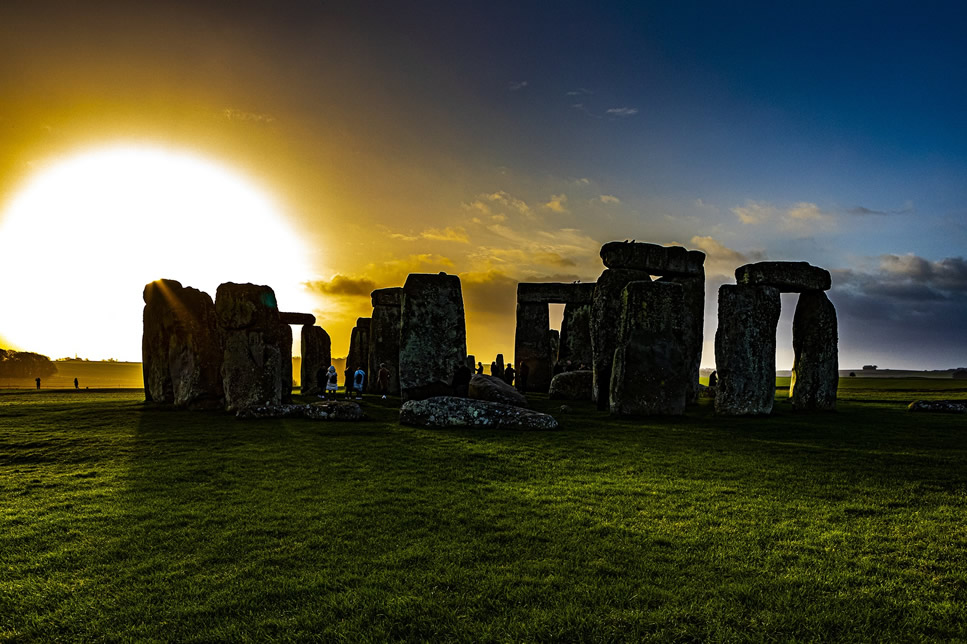
The Celts possessed a remarkably advanced understanding of astronomy, a discipline that held a central place in their culture. Unfortunately, this precious knowledge largely eludes us because the Celts favored oral transmission and did not see the need to record their discoveries in writing.
However, fragments of this ancestral wisdom survive through scattered testimonies, such as the one left by Julius Caesar in his work "Commentarii de Bello Gallico" ("Commentaries on the Gallic War"). He notes that the stars were an integral part of the druids’ discussions, these guardians of Celtic knowledge and wisdom. For the druids, constellations and celestial movements were much more than mere astronomical phenomena; they were carriers of divine messages, signs from immortal gods that the druids sought to interpret and decipher cosmic mysteries.
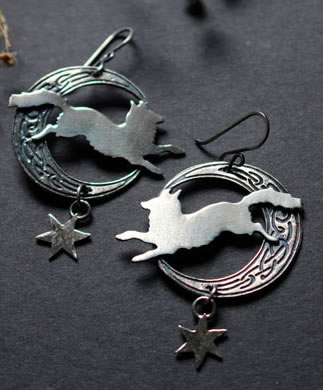
The Celts were deeply rooted in nature and its cycles, organizing their calendar around festivities that celebrated these natural rhythms. A tangible proof of this connection is found in the Coligny calendar, a valuable bronze tablet inscribed in Gaulish, which recorded important dates related to the seasons and sacred festivities. This calendar is a direct testament to the significance of astronomy in Celtic culture and how it influenced their daily and religious lives.
Many Celtic sanctuaries were meticulously aligned with the sun’s movements at different times of the year, reflecting their sophisticated understanding of solar cycles. For example, the sanctuary of Averne at Corent was closely associated with the sun’s movements throughout the seasons. Other sites, such as Puy de Dôme, were specifically linked to the solstices, while places like Puy de Saint-Romain were chosen for their alignment with the sunrise and sunset during Celtic festivals. Some were even dedicated to specific stars, illustrating the complexity of their cosmology and celestial worship. These alignments reflect a deep knowledge of astronomy, crucial for determining the appropriate times for rituals and celebrations.
In our collective imagination, we often envision druids and druidesses performing their rites under the silvery light of the moon or during the equinoxes, blending harmoniously into the mysteries of the night. This is why many pieces of jewelry evoke the moon and its phases, sometimes associated with symbols of nature or totem animals, embodying the intimate communion with nature inspired by these ancient Celts.
Druid, Druidess and nature
Celtic botanical knowledge
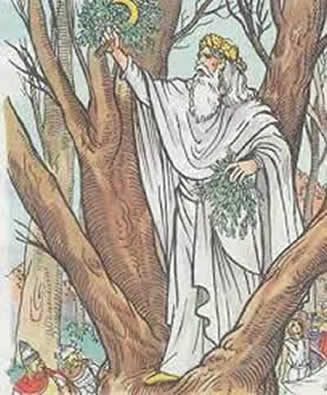
The druid, as a guardian of Celtic wisdom and scholar of nature, also embodies the valuable role of healer. Drawing on an intimate knowledge of plants and their medicinal properties, these skilled herbalists mastered the art of creating potions, elixirs, and remedies to treat various ailments. These fascinating plants and their healing powers hold a central place in our catalog.
The Celts regarded plants as sacred living beings, endowed with a unique spirit with which they could communicate. They saw them as gifts from the gods, manifestations of divine benevolence towards humanity, and treated them with deep respect. It was believed that the vital energy or aura emanating from these plants could have a direct impact on individuals' health and well-being, thereby reinforcing the sacred bond between humans and nature.
Druids not only knew the medicinal properties of plants but also their symbolism and magical power. For example, mistletoe, considered a sacred plant, was often harvested during special ceremonies, particularly at the winter solstice. Mistletoe, suspended from oak trees, was seen as a symbol of prosperity and divine protection, and its berries were used in potions to cure illnesses and ward off malevolent spirits.
The druids’ knowledge of plants came from their close relationship with the gods, who imparted the exact proportions and specific preparations needed to fully harness the healing virtues of herbs. Plant gathering was surrounded by precise rituals, emphasizing the sacred importance of this practice and ensuring respect for the natural forces at work in each harvested plant. For instance, certain plants had to be gathered at specific times of the lunar cycle or after reciting incantations to maximize their effects.
Druids and sacred trees
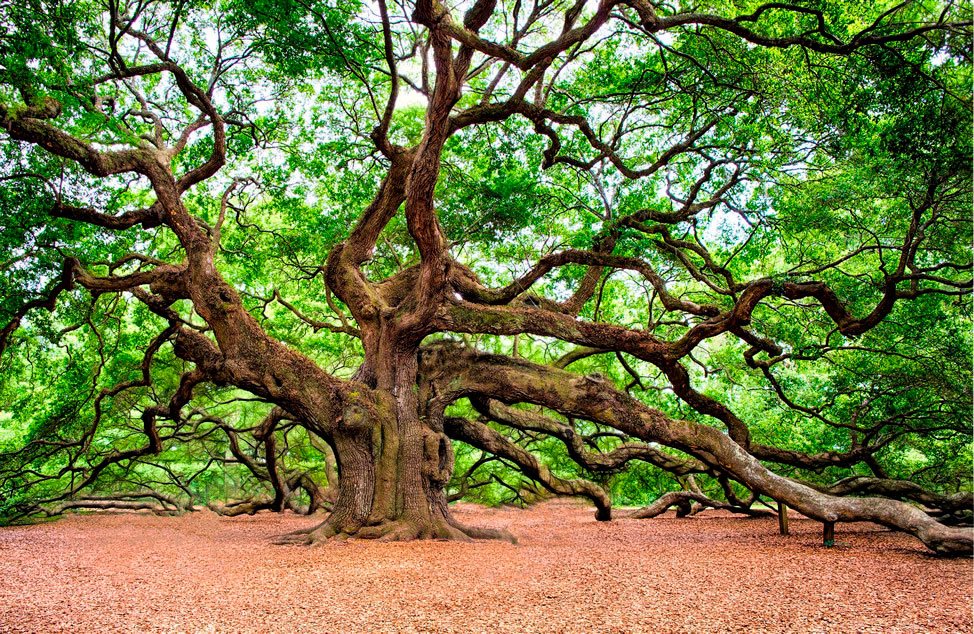
The Celts venerated seven sacred trees, which were considered fundamental pillars of their cosmology and were often present in sanctuaries or Nemetons. These trees included holly, birch, willow, oak, hazel, yew, and apple, each carrying deep symbolism and a mystical connection with the forces of nature and the cosmos. Additionally, other species like hawthorn, plum, ash, and elder also played an important role in their spirituality.
The selection of a sacred tree was a meticulous decision, guided by criteria such as its age, dimensions, and particular characteristics. Each tree was seen as a living representation of the "cosmic tree," which served as a sacred link between the underworld, represented by its deep roots, and the celestial world, symbolized by its branches reaching towards the sky. This complex symbolism reflected the Celts' holistic view of the interconnectedness of all aspects of the universe, and their reverence for trees was a tangible manifestation of their profound respect for life and spirituality.
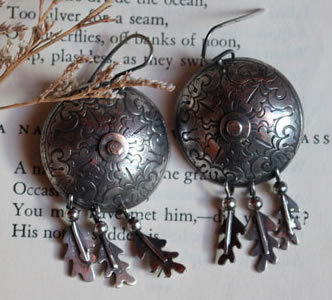
The oak, majestic and imposing, embodies divine power on earth, acting as a sacred bridge between the celestial and terrestrial realms. For the Celts, this tree was a sacred mediator, facilitating the smooth flow of energies between the world of humans and that of the gods. Deeply rooted in the earth and proudly reaching towards the sky, the oak symbolized this sacred connection and the harmony between opposing forces in the universe.
The significance of the oak reaches its zenith when it hosts mistletoe, a rare and mystical plant whose presence on the oak’s branches defies the very nature of the tree. Indeed, the oak produces an enzyme that makes the mistletoe’s habitat unusual and thus particularly valuable when it appears. This rare symbiosis between the oak and mistletoe is seen as a sacred union, a divine blessing that reinforces the Celtic belief in the mysterious magic of nature. This symbolic pair was often at the heart of druidic rituals, where mistletoe, gathered with a golden sickle, was considered a universal remedy.
Symbolizing unwavering strength and longevity, the oak also represents resilience and endurance, fundamental qualities in Celtic identity. Its imposing stature, branches extending towards the sky, and roots deeply anchored in the earth remind us of the stability and power of nature. This strength inspires respect and veneration, not only among the Celts but also in many cultures that view this tree as a symbol of persistence through the ages. Under the protective shadow of an oak, the Celts felt divine blessing and an intimate connection with the primordial forces of the universe, a spiritual communion that nourished their relationship with the divine.
The oak played a central role in Celtic rituals, particularly during solstices and other significant events of the Celtic year. Oak wood was often used in sacred fires, symbolizing purification and rebirth. Its branches were also used to trace ritual circles, marking the sacred space where druids performed their ceremonies. These rites were imbued with the essence of the oak, reinforcing the bond between humanity, nature, and the deities.
In addition to its ritual role, the oak was closely associated with specific deities in Celtic mythology, such as Dagda, the quintessential god-druid, whose wisdom and power were revered through the ages. The Celts believed that these gods sometimes resided in the oldest and most majestic oaks, transforming these trees into living sanctuaries where one could commune directly with the divine.
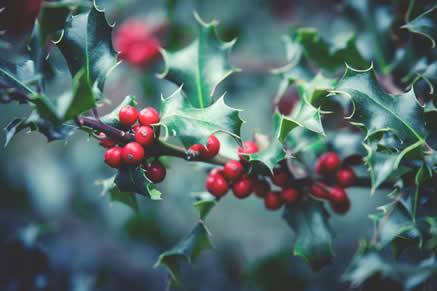
The holly, a sacred tree in Celtic mythology, holds a crucial place within the Nemeton, the Celts’ sacred sanctuary. Representing resilience and bravery, the holly embodies inner strength and perseverance in the face of adversity. Even when winter imposes its harsh reign, the holly remains green and vigorous, defying the biting cold by retaining the warmth of the sun. This enduring nature makes it a powerful symbol of immortality and balance, qualities highly respected in Celtic cosmology.
In this cosmology, the holly is often seen as the twin brother of the oak, sharing a complementary relationship that reflects the balance of natural forces. While the oak symbolizes vitality and the power of the bright days, ruling over the light half of the year, the holly takes over during the winter months, protecting the earth and its inhabitants from dark forces. The holly’s winter reign is particularly symbolic, as it represents the ability to retain inner light even in the darkest times.
The holly is also revered for its role as a spiritual protector. Its spiky leaves were considered a barrier against curses, negative energies, and poisons. The Celts believed that the holly had the power to dispel harmful influences, thus helping to maintain spiritual harmony. This tree was often planted near homes to protect dwellings from evil spirits and to attract luck and prosperity.
Beyond its protective attributes, the holly is celebrated for its striking beauty, notably its dark green leaves and bright red berries, which added a splash of vivid color to the winter gloom. These red berries, while symbolizing life and vitality, also had ritual significance. They were used in various practices to invoke fertility and prosperity, symbolizing the continuity of life even in the heart of winter.
For the Celts, standing under the protection of a holly tree was synonymous with safety and strength. This tree provided comfort and support in difficult times, reminding everyone that even in the most trying periods, it was possible to find light and balance through a deep connection with nature. The holly, as a guardian of natural forces during winter, represented a benevolent and protective force, a source of inspiration for druids and druidesses in their quest for wisdom and harmony.
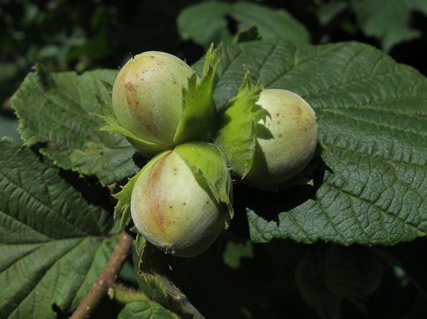
The hazel tree, also known as the coudrier, is revered in Celtic tradition as a symbol of great wisdom and knowledge. Its fruit, the hazelnut, hidden under a robust shell, epitomizes secrecy and mystery, harboring treasures of knowledge and power within. Druids, recognized for their scholarship, considered the hazel tree to be sacred wood, using it not only in their divination rituals but also as a powerful tool in their incantations and prophecies.
Hazel wood was prized for carving oghams, an ancient Celtic alphabet with mystical properties, often used for divination purposes. These sacred inscriptions, carved from hazel wood, served as a medium for oracles, bridging the visible and invisible worlds and enabling druids to communicate with spiritual forces. The relationship between the hazel tree and esoteric knowledge is so profound that the tree is often seen as a conduit for divine wisdom, a gateway to spiritual realms and hidden truths.
The influence of the hazel tree extends far beyond the Celtic era. Even today, its wood is used by dowsers to detect hidden water sources underground, perpetuating its millennia-old reputation as a guide to nature’s concealed secrets. This ability to reveal what is hidden reinforces the hazel tree’s symbolism as a tree of revelation and discernment, capable of uncovering the deepest mysteries of the universe.
In Celtic legends, the hazel tree is frequently associated with mythical beings such as fairies and unicorns, who find refuge under its branches. This association enhances its role as a guardian of ancient knowledge and esoteric sciences, making it a powerful symbol of wisdom and connection with the invisible worlds. With its roots deeply anchored in the earth and its branches reaching towards the sky, the hazel tree embodies the balance between the material and the spiritual, between earth and sky, symbolizing humanity’s eternal quest for ultimate knowledge.
In Celtic myths, its role is not merely that of a tree, but of a spiritual guide, a guardian of the universe’s secrets. In ancient stories, the hazel tree often stands near sacred wells, places of convergence between worlds, where water and tree unite to offer seekers divine wisdom. This image of the hazel tree, watching over sacred sources, illustrates its importance as a mediator between humans and supernatural forces.
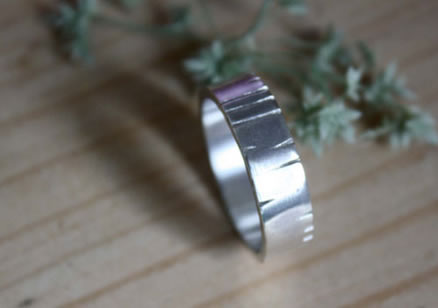
The birch tree embodies sacred union and divine purity in Celtic tradition, symbolized by its bright white bark that evokes moonlight. Considered the "tree of light" by the Celts, the birch is closely associated with magic and spirituality, offering a profound connection to celestial and lunar forces. The delicate and graceful nature of this tree reinforces its image as a divine, luminous, and protective being.
In Celtic symbolism, the birch represents harmony and unity, uniting opposites into a divine symphony of clarity and peace. Its pale bark evokes immaculate purity, while its light leaves whisper ancient secrets and silent prayers to the wind. The Celts revered the birch as a bearer of light in darkness, a source of inspiration and guidance in their spiritual quest. For them, the birch was not just a tree but a spiritual guide, offering subtle wisdom to those who knew how to listen.
The birch is also associated with renewal and rebirth in Celtic tradition. As the first tree to regrow after a fire or to colonize bare lands, it symbolizes resilience and the ability to regenerate, making it a symbol of new beginnings. This resilience serves as a powerful reminder that life can always rise from the ashes, and that purity and light can triumph even after the darkest periods.
Druids often used birch wood in purification rituals, including blessing new beginnings such as weddings or the construction of a new home. Its branches were sometimes used to make ritual brooms, symbolically sweeping away negative energies and preparing the ground for new positive energies. This practical use of birch in rituals symbolizes not only purity but also the protective power of this sacred tree, capable of cleansing and safeguarding sacred spaces.
In some interpretations, the birch is also seen as a symbol of femininity due to its natural grace and connection to the moon. It represents the nurturing and protective aspects of the feminine nature, offering refuge and protection against dark forces. The birch, with its gentle strength and capacity for renewal, is often associated with Celtic goddesses, symbolizing their power to give and protect life.
The birch appears in several Celtic legends, often described as a magical tree serving as a passage between worlds. For instance, in some stories, the birch is used by heroes to traverse the boundaries between the world of the living and the realm of spirits. This mystical dimension of the birch reinforces its status as a guardian of sacred portals, a tree that does not merely grow on earth but connects worlds, allowing the passage of souls and communication with the divine.
The apple tree embodies perfection and celebrates the sacred bond of love and respect between humanity and nature in Celtic tradition. Its emblematic fruit, the apple, is imbued with symbolism, representing much more than its mere exterior. At the heart of its juicy flesh lies a profound symbol of knowledge, and revelation.
In Celtic iconography, the apple tree evokes beauty and abundance, revealing nature’s generosity and the blessing of life. Its fruit-laden branches are an invitation to celebrate life and acknowledge the nurturing earth that surrounds us. The apple itself is often associated with science and wisdom, symbolizing the quest for truth and a deep understanding of the universe. The star-shaped pattern formed by the apple’s seeds was seen by the Celts as a sign of nature’s harmony and perfection, reflecting the hidden secrets of creation.
But the apple is also a symbol of magic and revelation, reminiscent of ancient tales and legends where it holds the power to unveil hidden truths or open doors to other worlds. For the Celts, the apple tree was a messenger of the soul, bearer of buried truths and spiritual teachings, inviting people to taste the wisdom and hidden knowledge within each ripe fruit. In some mythological narratives, the apple was also viewed as a fruit of immortality, offering those who consumed it a direct link to the Otherworld, the realm of gods and spirits.
The apple tree was also sacred to certain Celtic deities, such as the goddess Avalon, whose name means "Island of Apples." Avalon was considered a place of eternal rest and healing, where enchanted apple trees bore fruit with miraculous properties. In this context, the apple tree represented the gateway between the mortal world and the afterlife, a symbol of transition and transformation.
As a sacred tree, the apple tree played a role in Celtic rituals, often associated with harvest ceremonies, where the fruits were offered to the gods in gratitude for the abundance received. The branches of the apple tree could also be used in divinatory rites, where people sought to decipher messages from the spirits through the observation of fallen apples or patterns created by the branches.
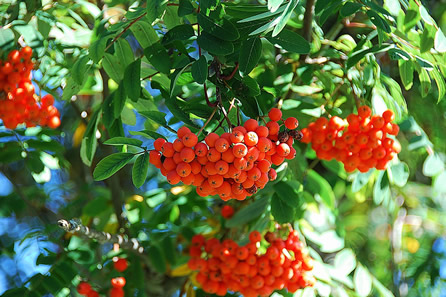
The rowan tree, revered in Celtic tradition as a tree of protection, is renowned for its ability to offer a shield against the destructive forces of nature, including lightning. Considered a guardian of sacred places, the rowan is often planted near homes and sanctuaries, acting as a vigilant sentinel against celestial storms and negative energies. The Celts believed that rowans possessed apotropaic power, capable of warding off evil and protecting travelers, making it a tree frequently invoked in protection rituals.
But the rowan does more than provide physical protection; it also promotes well-being and spiritual growth. Its emerald-green leaves and bright red berries evoke vitality and vigor, while its sturdy bark signifies resilience and inner strength. The rowan was also seen as a catalyst for clairvoyance and prophecy. In some Celtic traditions, its berries were used in potions or charms intended to open the mind to visions and enhance divinatory abilities.
By cultivating a deep connection with the rowan, the Celts honored not only its ability to offer physical protection but also its potential to nourish the soul and foster personal growth. This sacred tree was a valuable ally in the quest for harmony and spiritual development, providing a sacred refuge where souls could find peace and tranquility amidst the turmoil of daily life. The rowan was also associated with celebrating the cycles of nature, its fruits ripening as autumn approached, a time for reflection and harvesting the fruits of the spirit.
In some Celtic legends, the rowan is also described as a "tree of worlds," a link between the world of the living and the afterlife. It is said that rowans mark the portals between realms, where spirits and gods could manifest. Thus, the rowan was often revered as a tree that not only protects the material world but also guides and protects those who venture into the spiritual realm.
The yew, with its evergreen foliage, embodies the deep duality between eternity and death in Celtic tradition. On one hand, its dark green, persistent leaves evoke the idea of eternity and perpetuity, symbolizing the continuity of life through the endless cycles of nature. This immutability is further emphasized by the yew’s exceptional longevity, which can span several millennia, accentuating its association with eternity.
On the other hand, the toxicity of its wood and leaves renders it lethal to those who come into contact with it, reflecting the stark reality of death and finitude. The Celts believed that this toxicity served as a sacred protection against malevolent forces and wandering spirits, adding to the tree’s mystical aura.
Thus, the yew is seen as a crucial link between the living and the dead, acting as a bridge between two worlds. The Celts believed that the yew possessed a kind of consciousness that allowed it to watch over the souls of the deceased and guide their passage to the afterlife. Its dark, twisted branches were considered mystical portals leading to the realm of ancestors, providing comfort to the living while offering a passage for the souls of the departed to their eternal rest.
The presence of the yew in Celtic legends further reinforces its sacred role. In some traditions, the yew is associated with deities linked to the cycles of life and death and is sometimes used in healing and protection rituals. In this sense, the yew is an emblematic figure of the journey between worlds, representing both the end and renewal, the mystical voyage of the soul through the ages.
To learn more about sacred Celtic tree, we recommend you the following books:
The Celtic herbalists
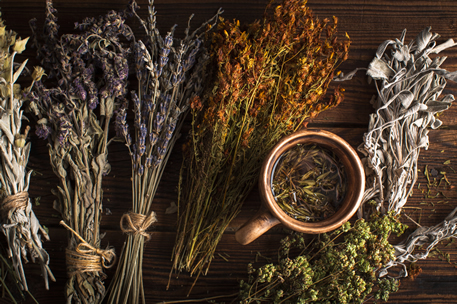
A multitude of plants were central to Celtic rituals and medicinal practices, reflecting the deep connection between the druids and the plant world. In addition to native species, druids had extensive knowledge of exotic plants, acquired through international exchanges, particularly with Mediterranean and Eastern regions. These exchanges enriched their knowledge base, integrating practices and substances from other cultures into their own traditions.
Among the most frequently cited plants are mistletoe, a symbol of regeneration and fertility; wormwood (or Saint John’s herb), renowned for its digestive properties and spiritual openness; and yarrow, valued for its healing and anti-inflammatory properties. Other widely used plants included mugwort, burdock, betony, mullein, heather, centaury, celandine, comfrey, poppy, watercress, fern, henbane, black ivy, water lily, plantain, groundsel, elder, vervain, belladonna, fennel, horehound, mint, anise, basil, samole, and selage, among many others, for their medicinal virtues and ritual powers.
In addition to these native plants, druids also imported exotic species such as iris from Illyria, used in preparations for its medicinal properties and association with deities. Myrtle was prized for its purifying qualities and role in fertility rites. Opium, pepper, ginger, frankincense, myrrh, and gum tragacanth enriched their repertoire and allowed them to explore new areas of medicine and spirituality, bringing Eastern and Mediterranean influences into their practices.
These plants were used in various ways in druidic practices: as infusions for healing and purification, as poultices for treating wounds, as incenses for purifying sacred spaces and individuals, or as simple offerings during sacred rituals to honor deities and invoke blessings. This diversity in plant use demonstrates the richness and depth of druids' botanical and natural magical knowledge, revealing their essential role as mediators between the natural and spiritual worlds.
Here are some examples of the use of these plants:
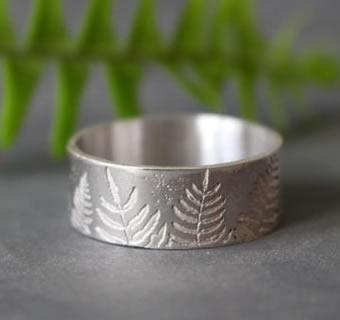
The fern, an emblematic plant in Celtic pharmacopeia, played a crucial role as a natural antiparasitic and wound healer, providing a valuable remedy for treating wounds and combating infections. Its antiseptic and anti-inflammatory properties made it a key ingredient in medicinal preparations used to clean and heal injuries. Additionally, druids used ferns for their beneficial effects on respiratory conditions, such as bronchitis and persistent coughs.
However, despite its healing virtues, the fern also had a dark and mysterious aspect. It was known for its potentially dangerous effects on women, as it was reputed to cause abortions or render those who consumed it sterile. This complex duality gave the fern an aura of power and danger, highlighting the need to use it with caution and respect. The plant was thus surrounded by myths and superstitions, often perceived as warnings for those seeking to exploit its powerful properties without proper knowledge.
Beyond its medicinal properties, the fern was also imbued with symbolism in Celtic culture. It was associated with memory and ancestral wisdom, representing a deep connection with the roots of the past and the teachings passed down through generations. As a guardian of collective memory, the fern was revered for its ability to preserve traditions and ancient knowledge, providing a vital link between the past, present, and future for the Celts. Druids believed that the fern could reveal hidden truths and aid in communication with ancestors, serving as a spiritual guide in the quest for ancestral wisdom.
In rituals and spiritual practices, the fern was often used for its protective qualities against negative energies and malevolent influences. Its fronds, arranged in a circle around sacred spaces or incorporated into amulets, were used to create a sacred space and preserve the purity of rites. Additionally, druids sometimes left fern offerings at power spots or sacred springs to honor nature spirits and ancient deities.
Wormwood or, absinthe, held a prominent place in Celtic pharmacopeia due to its numerous medicinal virtues. Considered a true universal remedy, it was used for a variety of ailments. Not only was it renowned for its effectiveness as an antiparasitic, but it was also prescribed for digestive issues, blood purification, and headache relief. Additionally, its healing properties extended to eye and ear conditions, providing relief for tired eyes and sore ears. Druids frequently used it in decoctions and infusions for its digestive and detoxifying benefits. Absinthe was also employed to treat menstrual disorders and improve blood circulation, showcasing its versatility in holistic health care.
Beyond its physical health benefits, absinthe was also valued for its calming effects on the mind. It was often used to soothe nerves and relieve stress, providing a welcome respite in a frequently tumultuous world. As a versatile medicinal plant, it embodied the spirit of healing and ancestral wisdom, offering a refuge for those seeking natural relief and harmony with their body and mind.
In spiritual and ritual practices, absinthe was used for its purifying and protective properties. It was incorporated into fumigations and incantations to ward off negative energies and create an environment conducive to meditation and clairvoyance. Druids believed that absinthe had a special connection with the spiritual realm, facilitating astral travel and mystical visions.
Furthermore, absinthe is sometimes associated with Celtic deities related to healing and wisdom, reinforcing its status as a sacred plant in healing rituals. Its reputation in Celtic tradition is also reflected in various legends and myths, where it is often described as a precious gift from the gods, capable of bestowing occult knowledge and protecting against malevolent influences.
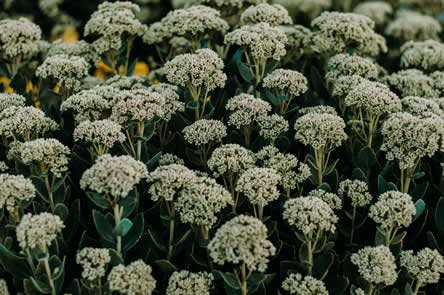
Yarrow, also known as woundwort or *Achillea millefolium*, held a prominent place in the Celtic medicinal arsenal due to its remarkable anti-inflammatory and healing properties. This notable plant was frequently used to alleviate inflammation and accelerate the healing process of wounds and injuries. Its natural compounds, such as flavonoids and essential oils, have analgesic and antiseptic properties, making yarrow a valuable ally in treating skin conditions, inflammatory disorders, and muscle pain.
In addition to its medicinal virtues, yarrow was also celebrated for its role in Celtic ritual and spiritual practices. Considered a sacred plant, it was often used in religious ceremonies and healing rituals. Druids employed it in purifying baths and ointments, sometimes planting it around places of worship to promote spiritual healing and protection. As an embodiment of nature’s wisdom, yarrow represented the earth’s ability to heal and regenerate, serving as a precious link between the physical and spiritual worlds for the Celts.
Yarrow's properties were also recognized in divinatory and magical practices. Druids used its leaves and flowers in protective sachets and potions designed to enhance intuition and clairvoyance. Yarrow symbolized harmony and balance, offering support during times of transition and renewal, and was sometimes associated with goddesses of healing and wisdom in Celtic mythology.
Mugwort, scientifically known as *Artemisia vulgaris*, was a valuable plant in Celtic pharmacopoeia, renowned for its complex and sometimes controversial medicinal properties. Used for centuries, it was employed in various therapeutic treatments. In particular, its infusions and baths were frequently used to relieve menstrual pain and regulate menstrual cycles. Mugwort was associated with purification practices and hormonal regulation, providing valuable support in gynecological care.
However, mugwort also possessed powerful properties that could lead to more serious effects. Some ancient accounts attribute to it the ability to induce abortions, and it was sometimes used to provoke early menstruation when needed. This use had to be handled with great caution due to potential health risks.
In addition to its role in gynecological treatments, mugwort was recognized for its beneficial properties in other areas of health. It was often used to treat digestive disorders, including bloating and indigestion, as well as to soothe sleep disturbances such as insomnia. Its antiseptic and anti-inflammatory properties also made it effective against respiratory conditions like coughs and colds.
Mugwort was also revered for its uses in magic and divination. It was often burned as incense in rituals to purify spaces and promote spiritual visions.
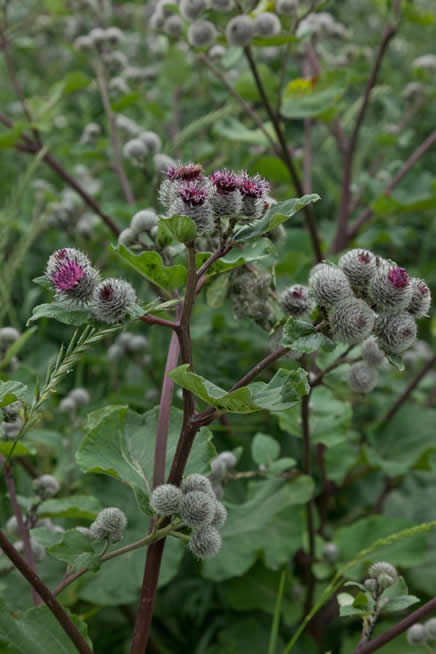
Burdock, also known as "greater burdock" (Arctium lappa), was a versatile plant with impressive medicinal properties in Celtic tradition. As an antipyretic, it was revered for its ability to combat fever and relieve intestinal pain. Its roots, rich in active compounds such as arctiin and phenolic acids, had anti-inflammatory and antiseptic properties, making burdock an effective natural remedy against infections and wounds. The Celts often used burdock decoctions or poultices to treat skin conditions and digestive problems.
Beyond its medicinal benefits, burdock was also valued for its purifying and immunostimulant properties. Druids used it as an essential tool to boost the immune system, especially during the harsh winter months. This use was linked to the belief that burdock could "purify" the body and mind, helping to eliminate accumulated toxins and enhance overall vitality. Its large leaves, often used in compresses, were also employed to relieve muscle pain and inflammation.
As a symbol of resilience and strength, burdock embodied the spirit of nature capable of overcoming obstacles. It was often associated with perseverance and regeneration, reinforcing the idea that nature provides resources to heal and revitalize both body and mind. Burdock was also considered a protective plant, offering essential support to maintain balance and health throughout the year.
Belladonna, deadly nightshade (*Atropa belladonna*), also known as "beautiful lady" or "nightshade cherry," was an enigmatic plant both feared and revered in Celtic tradition. Beyond its reputation as a formidable poison, belladonna was also associated with deep mystical and spiritual practices.
In some ancient texts, references suggest that belladonna was used by druids to contact spiritual forces and achieve states of deep trance. Animal skins were coated with belladonna and other sacred plants, and druids would lie naked on them during sacred rituals, entering an altered state of consciousness conducive to spiritual revelation. The psychoactive effects of belladonna were indeed sought for their ability to induce visions and revelations, allowing users to communicate with spirits or access hidden knowledge.
However, while these practices might seem mysterious and esoteric, it is mainly the toxic reputation of belladonna that has remained in historical records. With its bright red berries and deep green leaves, belladonna was feared for its lethal potential and devastating hallucinogenic effects. Even in small amounts, the plant could cause hallucinations, convulsions, and even death.
The duality of belladonna is marked by its both beneficial and dangerous effects. In addition to its ritual uses, the plant was employed in traditional medicine to treat various ailments, despite its potential risks. Ancients used belladonna preparations for their analgesic and mydriatic properties (pupil dilation), as well as in contexts of pain relief or gastrointestinal disorders. However, the margin between therapeutic and toxic doses is narrow, making its use extremely delicate.
In Celtic imagination, belladonna thus embodied a tension between the sacred and the dangerous, the mystical and the mortal. Its ability to induce altered states of consciousness while presenting serious risks in cases of misuse highlighted the need for a balanced and respectful approach to natural forces. Belladonna thus represents an archetype of power and danger that accompanies the quest for spiritual knowledge and personal transformation.
Betony (*Betonica officinalis*), also known as "carpenters’ herb" in Celtic tradition, held a valuable place in the medicinal arsenal of the ancients. Esteemed for its therapeutic virtues, this plant was particularly effective in treating migraines, dizziness, and even paralysis, thanks to its active compounds with analgesic and anti-inflammatory properties. It was often used in infusions or decoctions to soothe neurological pain and support the relief of nervous system disorders.
Beyond its medicinal uses, betony also held symbolic significance in Celtic tradition. It was frequently associated with protection and purification and was employed in rituals to ward off negative energies and malevolent influences. Its ability to alleviate pain and neurological disorders made it a symbol of healing and inner strength, providing support to individuals seeking recovery or spiritual protection.
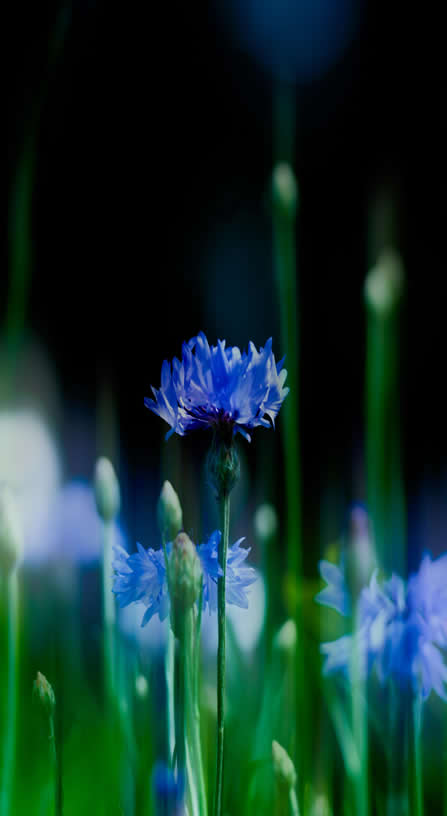
Centaury, also known as "holy centaury," played a vital role in the daily life of the Celts as a protective and healing plant. Revered for its magical and medicinal properties, it was often used to protect homes and food supplies from harmful influences. The druids considered centaury to be a spiritual shield, warding off negative energies and providing sacred protection to households and their occupants.
Due to its protective properties, centaury was also used in amulets and talismans designed to preserve the health and well-being of those who wore them.
In addition to its role as a guardian of homes, centaury was also known for its medicinal virtues. Druids used this plant as a purgative and cleansing remedy, helping to eliminate toxins from the body and restore internal balance. Its diuretic and depurative properties made it a valuable ally for renal and liver disorders. Additionally, centaury was considered an effective antidote against snake venom, offering hope of healing for those bitten by these formidable creatures. Infusions and decoctions of centaury were often administered for their soothing and regenerative effects on the digestive system and metabolism.
The Celts also attributed special magical properties to centaury. Beyond its protective use, it was often incorporated into rituals to attract luck and promote prosperity. Its presence in ceremonies was believed to harmonize the energy of places and create an atmosphere of peace and serenity. The plant was sometimes burned as incense during rituals to purify the air and drive away negative energies.
Celandine, Chelidonium, also known as "wartwort" or "wart herb," was a plant recognized for its diverse medicinal properties in Celtic tradition. Used for centuries, it held an important place in Celtic pharmacopoeia for its benefits for the eyes. Chelidonium was considered a valuable remedy for improving vision and relieving ocular conditions. It was often prepared as an eye drop or lotion to cleanse and soothe irritated eyes and was sometimes used to treat conditions such as conjunctivitis and cataracts. Its yellow sap, rich in alkaloids, was applied topically to reduce inflammation and irritation.
Chelidonium was also revered for its healing virtues in other areas of health. Druids used this plant as a versatile remedy for a variety of ailments. Externally applied, chelidonium was known for its antiviral and antifungal properties and was used to treat skin conditions such as warts, rashes, and skin infections. Internally, it was used for its beneficial effects on the digestive system, including relief from digestive disorders such as indigestion and colic. Its antispasmodic properties also made it an effective remedy for abdominal pain and cramps.
Symbolically, chelidonium was associated with purification and regeneration in Celtic tradition. Its ability to "cleanse" and "heal" was seen as a reflection of its spiritual power, providing not only physical benefits but also support in purification and renewal rituals. The plant was sometimes included in rites of passage, such as purification ceremonies or preparation before spiritual journeys, to help balance and rejuvenate personal energies.
Comfrey, also known as "knitbone" or "Symphytum officinale," was an extraordinarily versatile plant in Celtic tradition, valued for its exceptional medicinal properties. It was renowned for its effectiveness in treating a wide range of health issues.
The Celts used comfrey to address various ailments, from kidney and lung pains to throat problems and stomachaches. Its ability to soothe bleeding and treat sprains made it an essential remedy in medical practices of the time. Its broad range of uses, from resolving internal issues to healing external injuries, highlights its versatility and importance in traditional medicine.
One of the most notable aspects of comfrey was its role in tissue regeneration and bone healing. According to Celtic beliefs, it had unique regenerative properties due to its high content of allantoin, an active compound that stimulates cell growth and promotes the formation of new tissues. This exceptional ability to accelerate the healing process was particularly valued for treating fractures and traumatic injuries, making comfrey a valuable ally in physical rehabilitation.
Comfrey was also used in various forms: decoctions, poultices, or ointments to fully harness its healing properties. In addition to its medicinal applications, it was sometimes incorporated into purification and protection rituals, thus reinforcing its role in maintaining both physical and spiritual health.
Verbena, Vervain, an emblematic plant whose name derives from the Celtic "ferfaen," meaning "sacred branch," held a central place in the spiritual and medicinal practices of the Celts. Considered a sacred plant with prophetic powers, it was often used for prophecy and divination. Druids placed great importance on harvesting verbena, as it represented a sacred link between the earthly world and the divine realms.
Verbena was known for its versatile medicinal properties. It was notably used as an antipyretic, soothing fever and alleviating symptoms of various illnesses. As a universal remedy, it found its place in many medicinal preparations to treat ailments ranging from digestive disorders to respiratory infections.
However, harvesting verbena was governed by strict rules dictated by Celtic tradition. To ensure its maximum efficacy, it had to be gathered during specific transitional times, such as dawn and dusk, when neither the sun nor the moon dominated the sky. It was during these moments that verbena fully revealed its magical and medicinal powers, thus providing a sacred link between humans and the mystical forces of nature.
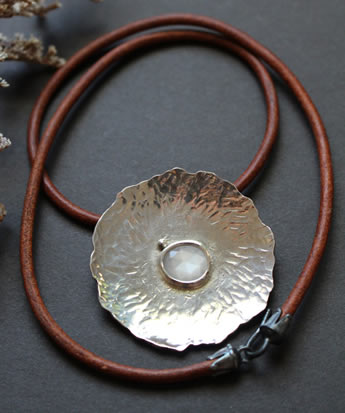
The water lily, also known as "sacred lotus," was an enigmatic plant associated with powerful symbols and meanings in Celtic tradition. While its floral beauty was admired, the water lily was also renowned for its magical and mysterious properties, often surrounded by superstitions and legends.
Among popular beliefs, there was one that the water lily could cause impotence and infertility, which was often linked to curses or protection rituals. Due to this reputation, the water lily was sometimes regarded with both caution and respect, seen as a plant with formidable magical powers.
In the context of Celtic magic, the water lily was occasionally used for its neutralizing properties, capable of nullifying curses or counteracting spells. Its ability to thrive in challenging aquatic environments made it a symbol of resilience and inner strength, despite the negative connotations it might carry.
Conversely, the water lily was also revered for its beauty and grace. It symbolized purity and spiritual awakening, being associated with purification rites and mystical practices aimed at achieving high levels of consciousness and connection with the spiritual world. Its presence in ponds and rivers was seen as a sign of blessing and renewal, reflecting nature’s ability to transcend dark aspects and offer profound wisdom.
The mullein was a plant renowned for its purifying and disinfecting properties in Celtic tradition. Used for centuries in healing practices and purification rituals, mullein was considered a true panacea for warding off diseases and protecting places from negative influences. Its ability to purify and heal gave it a central role in cleansing rituals and the protection of sacred spaces.
One of its most notable uses was as a natural torch. Celtic druids and healers employed dried mullein stalks as torches during sacred ceremonies or healing rituals. When burned, the fumes were reputed for their antiseptic properties, warding off illness and purifying the atmosphere of sacred spaces. This use of mullein as a torch also symbolized light and spiritual purification, illuminating paths during nocturnal rituals.
Mullein was also used in fumigation to disinfect places and drive away negative energies. The plant’s leaves and flowers were burned or infused in water to create disinfectant solutions used to cleanse homes, temples, and altars. Druids believed that these fumigations not only eliminated physical germs but also undesirable spiritual influences, thereby bringing enhanced harmony and protection to those in the purified spaces.
Additionally, mullein was sometimes used in potions and ointments for its medicinal virtues. It was employed to treat respiratory conditions such as coughs and bronchitis, as well as for its anti-inflammatory and analgesic properties in remedies for bodily aches.
The poppy, with its delicate scarlet red flower, held a special place in Celtic pharmacopeia and traditions. Beyond its enchanting beauty, the poppy was valued for its soothing and healing effects, particularly in the context of infant care and gastrointestinal issues.
For newborns, the Celts used poppy petals, reduced to a soft and comforting paste, to promote peaceful and restorative sleep. This practice was considered a natural and gentle way to calm restless infants and help them fall asleep more easily, providing welcome relief to young parents. The sedative properties of the poppy were recognized for their ability to induce deep sleep without the side effects of heavier treatments.
Additionally, the poppy was also used in beverages for its healing properties on stomach ailments. Celtic druids and healers prepared infusions made from poppy petals to soothe stomach aches, reduce inflammation, and promote the healing of ulcers and gastrointestinal irritations. The anti-inflammatory and mildly analgesic properties of the poppy made it valuable for treating digestive disorders and offering relief to those suffering from gastric issues.
Symbolically, the poppy was associated with peace and tranquility in Celtic traditions. Its vibrant color and use in soothing remedies made it a symbol of rest and serenity. In rituals and ceremonies, the poppy could be used to invoke inner peace and spiritual healing, reflecting its role as a plant with calming virtues both physically and spiritually.
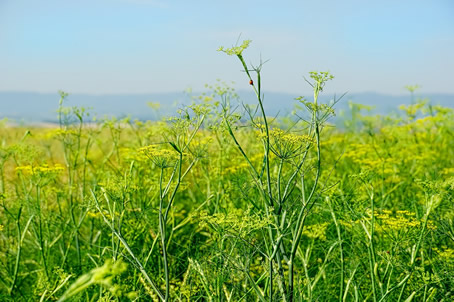
Fennel, with its distinctive form and captivating aroma, was a revered plant in Celtic tradition for its numerous healing properties. Used since antiquity for its medicinal virtues, fennel was considered a versatile remedy capable of alleviating a variety of ailments, ranging from coughs to bladder issues, and even venomous bites.
Thanks to its diuretic and laxative properties, fennel was often used to aid in purification and the elimination of toxins from the body, providing a natural means of cleansing and purging internal impurities. Celtic druids and healers valued fennel for its role in purification rituals, believing that its cleansing properties promoted a healthy balance of body and mind.
As a remedy for respiratory issues, fennel was employed for its expectorant and soothing effects. Its seeds were often infused in teas to calm coughs, relieve bronchitis, and promote easier breathing. Fennel was also used to reduce inflammation in the respiratory tract and enhance breathing comfort.
Additionally, fennel was renowned for its beneficial effects on bladder health. Its anti-inflammatory and diuretic properties helped alleviate urinary infections and supported the proper functioning of the urinary tract. Druids often recommended fennel decoctions or infusions to support kidney and urinary health, as well as to aid in toxin elimination from the system.
Finally, in cases of venomous bites, fennel was used for its antitoxic and healing properties. Fennel-based preparations were applied topically to wounds to neutralize venoms, reduce swelling, and accelerate the healing of damaged tissues. Thus, fennel was a valuable ally in managing medical emergencies and infections.
Fennel was also appreciated in spiritual practices for its qualities of purification and protection. As a sacred herb, it was sometimes used in rituals to ward off negative energies and provide protection against harmful influences, further reinforcing its status in Celtic spiritual and medicinal traditions.
Ivy, with its graceful vines and evergreen leaves, was revered as a symbol of protection and eternity in Celtic tradition. Considered a guardian of thresholds and boundaries, ivy was often planted around homes and sanctuaries to ward off harmful influences and provide spiritual protection to the inhabitants. As a plant associated with longevity and resilience, ivy was also used in rituals to symbolize immortality and the continuity of ancestral traditions and knowledge.
Ivy was also renowned for its divinatory properties. Celtic druids and seers used its leaves in divination rituals, believing that their shape and arrangement could reveal messages from the spiritual realms, offering insights into the future and valuable guidance. Ivy leaves were often cast or arranged in specific patterns to interpret signs and guide important decisions. Ivy was also used in the making of sacred wreaths and garlands, symbolizing the unity and connection between the human world and the spiritual world.
Medicinally, ivy was a valuable resource for relieving a variety of ailments. Thanks to its soothing and expectorant properties, it was often used to treat respiratory conditions such as coughs, whooping cough, and upper respiratory infections. Ivy-based preparations, such as infusions or poultices, were employed to reduce inflammation in the respiratory tract and promote easier breathing.
Additionally, ivy leaves were also used to treat irritated eyes and to soothe skin irritations. The anti-inflammatory and healing properties of ivy made it an effective remedy for rashes and minor burns. Druids also used it in preparations to strengthen the immune system and support recovery after illnesses.
Ivy, with its persistent nature and ability to grow in challenging conditions, was perceived as a symbol of inner strength and resilience. It embodied the idea that even in the most difficult times, nature could offer powerful solutions and support, reflecting the wisdom and healing capabilities inherent in the earth itself.
Mistletoe, with its mystical white berries, held a prominent place in Celtic mythology as a symbol of eternity and power. For the ancient Celts, mistletoe was considered sacred when it grew on the majestic oak, forming a mystical union between the oak’s robust strength and the enchanting magic of the mistletoe. This sacred symbiosis represented the harmony between the earthly and the divine, offering a tangible expression of nature’s power and vitality. Mistletoe, with its life-giving properties, was also associated with fertility and regeneration, reinforcing the idea of continuity and renewal.
The gathering of mistletoe was a solemn ritual, laden with symbolism and mystery. The druids, keepers of sacred knowledge, would carefully cut the coveted plant with a golden sickle, letting it fall onto a large white cloth. This sacred moment was celebrated as a union between man and nature, where the magical powers of mistletoe were unleashed to offer healing and protection to those in need. Mistletoe was often harvested during the Yule celebrations, around the winter solstice, symbolizing the triumph of light over darkness and the promise of nature’s rebirth.
Beyond its sacred symbolism, mistletoe was also revered for its exceptional healing virtues. Regarded as a universal remedy capable of curing a multitude of ailments, mistletoe was especially valued for its fertility-enhancing properties. The Celts firmly believed in its power to cure infertility, offering much-needed hope to couples wishing to start a family. In traditional medicine, mistletoe was also used to treat cardiovascular disorders, such as hypertension and palpitations, due to its hypotensive properties and ability to regulate heart rhythm.
The leaves and berries of mistletoe were prepared in decoctions or infusions, sometimes combined with other sacred herbs to maximize their healing effects. Mistletoe was also used in protection ceremonies, where it was hung in homes or workplaces to ward off evil spirits and bring luck and prosperity. Its presence was seen as a shield against negative influences and a conduit for divine blessings.
Plantain, this humble herb with broad, fleshy leaves, was revered in Celtic tradition for its numerous healing benefits and symbolic generosity. Considered a loyal ally in combating a variety of ailments, plantain was a valuable resource for Celtic druids and healers, providing effective relief for a multitude of conditions.
Thanks to its anti-inflammatory and analgesic properties, plantain was used to relieve headaches and stomachaches, soothing pain and discomfort. Its leaves were often applied as a poultice on the temples or abdomen to provide quick relief. Additionally, its hemostatic properties made it an effective remedy for stopping bleeding and promoting the healing of wounds and ulcers. When applied topically, crushed plantain leaves were used to cover injuries, helping to reduce inflammation and speed up the healing process.
In the case of snake bites or venomous insect stings, plantain was also renowned for its antivenom properties, helping to neutralize toxins and reduce inflammation and swelling. Its ability to draw out poisons from the body made it a valuable plant in emergency situations. Healers often applied fresh leaves directly to the bite or sting to mitigate the harmful effects of venoms.
Beyond its medicinal benefits, plantain was also venerated for its symbolic generosity. By offering its large, nourishing leaves to soothe ailments and heal wounds, plantain embodied the generosity of nature, providing its precious gifts for the well-being and health of those in need. In Celtic culture, this plant was often associated with healing rites and offerings of gratitude to the spirits of nature. Its common use in purification and protection ceremonies testified to its important place in the daily life of the Celts.
Celtic druids and healers also used plantain in preparations to strengthen the immune system and enhance resistance to illness. Plantain infusions were consumed for their beneficial effects on the respiratory and digestive systems, making this plant an indispensable ally in traditional Celtic medicine.
It is essential to recognize that Celtic healers did not rely solely on plants for their medicinal practices but also incorporated other natural elements such as water, earth, stones, and minerals. In their pursuit of holistic healing and a deep connection with the forces of nature, Celtic healers integrated a variety of elements to fulfill their sacred duties.
Water, regarded as a symbol of purification and regeneration, played a crucial role in Celtic healing rituals. Healers used water from sacred springs or rivers for its healing and purifying properties, believing in its power to wash away ailments and restore inner balance. Rituals involving water could include ritual immersions or ablutions to remove negative energies and promote spiritual healing. Additionally, water was often blessed by druids and used in potions and decoctions to enhance its sacred properties.
Earth, representing stability and fertility, was also utilized in Celtic healing practices. Healers created poultices and ointments from earth, clay, or mud, believing in its nourishing and healing properties to promote the recovery of wounds and skin conditions. Earth was often associated with grounding rituals, where patients were in direct contact with the soil to stabilize their energy and restore vitality. Offerings to the earth and rituals of gratitude toward the earth goddess were common to strengthen the connection between individuals and the forces of nature.
Stones and minerals were also revered for their healing and energetic properties. Celtic healers used crystals and gemstones to channel beneficial energies, providing spiritual and emotional support to those seeking healing. Druids often incorporated these stones into amulets, talismans, and healing rites, believing they could positively influence the bodily and spiritual energies of individuals.
By combining these natural elements with the properties of plants, Celtic healers created integrative healing approaches that addressed not only the physical aspects of illness but also the spiritual and energetic dimensions of health. This holistic approach reflects the Celts' profound connection with the natural world and their understanding of the interdependence between body, spirit, and nature.
To learn more about the plants used by the Celts, we recommend you the following books:
The Celtic animal world
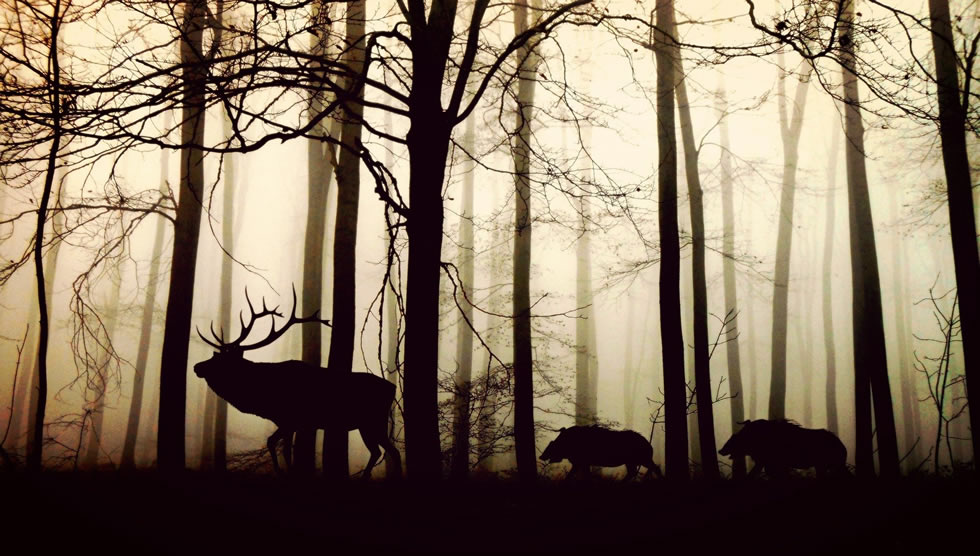
In the vast and mysterious Celtic universe, steeped in ancient traditions and wisdom, the bonds between humans and animals hold a central place, particularly within the druidic domain. The Celts, a people deeply connected to nature, regarded animals as spiritual guides and bearers of symbolic meaning. For the druids, guardians of ancestral knowledge and sacred rituals, every living creature embodied a sacred essence, revealing hidden truths and essential life lessons.
Each animal, whether wild or domesticated, terrestrial or celestial, was considered a messenger of the gods, carrying omens and divine signs. The druids drew inspiration from the behaviors, characteristics, and even habitats of animals to interpret the will of the universe and guide members of their community. Animals were often associated with specific deities or divine attributes, and their presence in dreams or visions was seen as a sign of spiritual communication.
Druids also employed animals in their divinatory rites, observing their behaviors and studying their interactions with the natural world to glean insights about the future and advice on important decisions. The cries of birds, the movements of animals in the forest, and even the behaviors of domesticated animals were considered significant in divinatory practices.
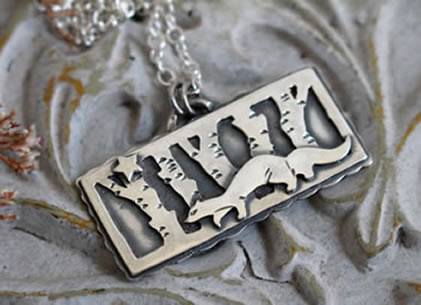
The weasel embodies a complex set of traits and meanings. For the Celts, it carried multiple connotations, reflecting both admirable qualities and more ambivalent aspects of human nature.
To the Celts, the weasel was a symbol of affection and vigilance, admired for its unwavering devotion to its family and its fierce determination to protect its territory. Despite its small size, the weasel’s courageous and resolute nature illustrated inner strength and perseverance in the face of challenges. This made it an emblem of tenacity and dedication, reminding the Celts of the importance of defending what is precious and showing bravery in difficult times.
However, the weasel also possessed a more complex dimension, marked by its cunning and agility. In certain legends, it was associated with deceptive behaviors and a tendency to manipulate to achieve its goals. This darker side of the weasel served as a lesson on the dangers of excessive ambition and manipulation, while also highlighting that these traits can be integral to the cosmic balance. Thus, the weasel taught the Celts to remain vigilant and discerning in their relationships and interactions, acknowledging that even the most ambiguous aspects of nature have their place in the complexity of the natural and spiritual worlds.
The bee holds a revered position in Celtic tradition, representing far more than its vital role in pollination and honey production. For the Celts, the bee embodies ancestral wisdom, immortality, and the mysteries of nature, carrying within it the teachings of the gods.
At the heart of this symbolism lies the precious honey, a golden nectar whose exquisite sweetness is metaphorically linked to the ambrosia of the gods. This sacred nectar is transformed into mead, a holy drink among the Celts. Often consumed during ritual celebrations, mead was considered the drink of immortals, granting mystical powers and a deep connection with the divine to those who partook. Its preparation was a sacred art, involving specific rites to ensure that the elixir retained its spiritual properties.
The bee, through its diligent work and complex social organization, is seen as a guardian of esoteric knowledge. Its ritual dances, which reveal the location of nectar sources, are interpreted as a cosmic dance, symbolizing the sacred interconnectedness of all life on earth. The bee’s agile and methodical flight is reminiscent of the movement of stars, underscoring the harmony and order present in the universe.
In Celtic tradition, the bee is also associated with the goddess Brigid, the deity of poetry, healing, and the forge. Brigid is the keeper of sacred flames, symbolizing the regenerative power of nature. As a source of creative inspiration, she embodies the eternal promise of rebirth and the link between the human and divine realms. By producing honey, bees participate in Brigid's sacred work, with their nectar regarded as a divine offering and a source of wisdom.
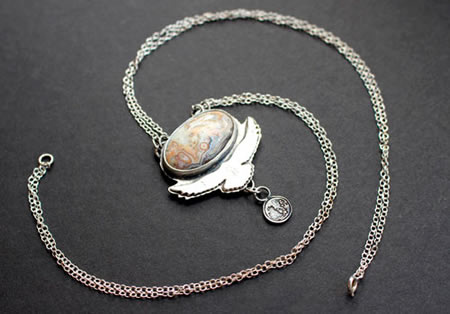
The eagle holds a prominent position as a symbol of the air, representing freedom, clear vision, and celestial power. In the vast Celtic animal pantheon, which includes initiatory figures such as the mystical blackbird, the wise owl, the majestic stag, and the sacred salmon, the eagle stands out with its majestic wingspan and celestial grace.
The eagle was often associated with Celtic deities such as Belenus, the god of light, or Taranis, the god of thunder. This mythological connection reinforces its status as a divine messenger and a symbol of celestial majesty. The druids, keepers of the universe’s mysteries, observed the eagle with admiration in its natural habitat, viewing it as a spiritual guide and bearer of sacred wisdom. As a bird of prey, the eagle embodies the quintessence of strength and keen insight.
The druids used the image of the eagle in their rites and ceremonies, believing that this powerful bird had the ability to transcend the boundaries between worlds. This capacity to communicate with spirits and deities made the eagle an essential conduit for divination rites and spiritual invocations.
In Celtic legends, the eagle plays a crucial role in hero stories and myths. It is often depicted as a guardian or guide in epics, underscoring its significance in traditional narratives.
The eagle, as the opposite of the serpent in druidic symbolism, represents the duality inherent in human existence. While the serpent embodies the forces of the earth, rebirth, and transformation, the eagle soars above the skies, symbolizing transcendence, elevation, and clarity of mind. Their dialectical opposition reflects the dynamic balance between cosmic forces, where the harmonious union of opposites creates order and harmony in the universe.
Together, the eagle and the serpent represent the fundamental pillars of druidic philosophy, embodying the elements of air and earth respectively, and symbolizing the divergent yet complementary paths toward wisdom and enlightenment.
The lark, or *Alauda*, embodies a sacred bridge between the earthly realms of humans and the celestial spheres of the gods. This small bird, often seen at dawn, marks the transition between night and day, symbolizing daily renewal and the promise of a new day. Its connection to solar cycles strengthens its association with Lugh, the god of light, whose invigorating energy is manifested in each sunrise.
As a messenger bird, the lark plays a crucial role in conveying human prayers and wishes to the celestial heights. Its melodious song, carried by the wind, resonates like an invocation to higher powers. It is possible that the Celts used this song in morning rituals or prayers to call upon divine blessings at the start of each day, making the lark a symbol of protection and hope.
The lark also embodies the subtle duality between strength and lightness. While the eagle represents strength and clear vision, the lark, with its grace and lightness, symbolizes spiritual elegance and softness. This duality may illustrate the different ways in which the Celts perceived the balance of natural forces, with each bird playing a complementary role in the harmony of the universe.
In Celtic narratives, the lark is associated with divine figures such as Lugh and Brigid. The link with Brigid, goddess of poetry, healing, and forge, underscores the lark’s role as a symbol of poetic inspiration. Its song, seen as a celestial melody, evokes the harmony and creativity that Celtic poets sought to capture, transforming words into a sacred form of art.
Finally, the lark’s agile flight and enchanting song embody grace and purity, reminding humans of the fleeting beauty of life and the importance of cultivating sacred connections with the divine. As a spiritual guide, the lark underscores the necessity of living in harmony with natural rhythms and life’s cycles, while honoring the profound connection that unites every living being with the universe.
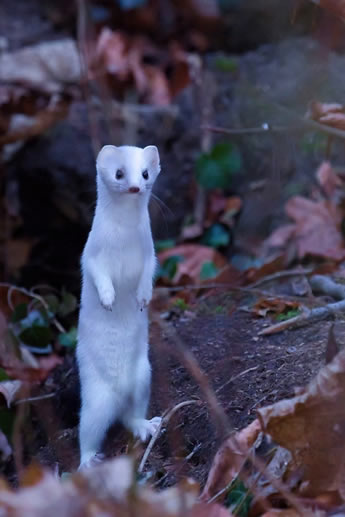
The ermine represents far more than just an animal. It is a powerful symbol of the indomitable warrior maiden, embodying the very essence of courage, nobility, and purity in the Celtic spirit.
Proud and graceful, the ermine evokes the image of a fearless warrior, ready to face the most formidable challenges with unwavering determination. Its immaculate fur, speckled with black, symbolizes the inherent duality of the human condition, where purity and strength blend in perfect harmony.
For the Celts, the ermine is a living symbol of the struggle for integrity and justice, reminding warriors of the importance of staying true to their convictions even in the darkest times. The ermine’s white fur dotted with black could be interpreted as a symbol of the balance between good and evil, light and shadow. This reflects how the Celts perceived duality not as opposition but as a necessary equilibrium.
The ermine is also associated with Celtic ritual practices. It might have been invoked for rituals of protection, purification, or to bestow courage and determination upon warriors before battle. Its agility and ability to survive in harsh environments make it a symbol of resilience and adaptability.
In Celtic tradition, the ermine is closely linked to the goddess of war and sovereignty, Macha or Morrigan, embodying the indomitable spirit and fierce determination of Celtic women in their quest for freedom and independence. These goddesses, often depicted with totemic animals like the ermine, symbolize feminine power and the capacity for transformation, guiding warriors not only in battle but also in their pursuit of spiritual sovereignty.
Its image is frequently invoked in epic tales of battles and conquests, where its presence inspires fighters to excel and defend their honor and homeland valiantly. In these narratives, the ermine represents not only an external force but also an inner call to justice, truth, and honor, reminding the Celts that true victory is the triumph of the soul.
The goose holds deep significance, being associated with both war and divination. Among the Celtic Bretons, this noble creature was imbued with a mystical aura, elevated to the status of a tabooed food alongside the hen and the hare. This prohibition reflects the sacred respect the Celts had for these animals, recognizing their close ties to the invisible forces that govern the universe.
Indeed, the goose, like the swan, is often seen as a messenger from the beyond, a bridge between the earthly realm and the celestial spheres. Its majestic flight across the skies evokes a connection with deities and ancestral spirits, making it a spiritual guide for those who can interpret its movements among the clouds. In Celtic mythology, some tales speak of geese accompanying the souls of the deceased to the otherworld, ensuring their safe passage under the protection of deities.
In Celtic tradition, the goose is also associated with war, symbolizing the bravery and determination of warriors on the battlefield. Its shrill call, often heard as a warning or rallying cry, resonates as a call to vigilance and the defense of the sacred. The goose, with its protective behavior and keen sense of territory, reminds the Celts of the importance of defending their home and homeland with courage and vigor against hostile forces. This symbolism is reinforced by the fact that the goose, despite its apparent gentleness, can be fierce and fearless when protecting its kin or territory.
Moreover, the goose is frequently mentioned in Celtic divinatory practices, where its movements and calls were interpreted as omens of good or ill fortune. Druids, keepers of esoteric knowledge, often consulted geese for insights into the future and the hidden mysteries of the universe. They might observe the flight formations of migrating geese to predict upcoming events, using these celestial signs as coded messages from the gods. As intermediaries between worlds, geese were also venerated in certain rituals, serving as a tangible link to supernatural forces and protective spirits.
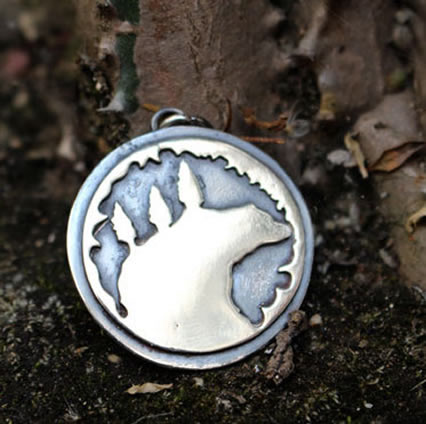
The bear held a prominent place, likely being the most revered animal until the advent of Christianization, which symbolically replaced it with the lion. Regarded as a being of paramount importance, the bear elicited deep respect and ancestral veneration among the Celtic peoples. Its image was ubiquitous in mythology, rituals, and druidic symbols, making it a central figure in the Celtic animal pantheon.
It is often mentioned that the bear was seen as the ancestor of man, a belief perhaps supported by its ability to stand on its hind legs, thus symbolically evoking a connection with humanity. This capability endowed it with an aura of power and majesty, reinforcing its reputation as a symbol of kings and rulers. In some Celtic traditions, it was even said that kings and clan chiefs possessed the spirit of the bear, granting them strength and wisdom in their decisions. The bear embodied qualities of strength, courage, invincibility, and virility, making it a model of bravery and determination for Celtic warriors. Its dense fur and ability to hibernate were also associated with regeneration and the cycle of life, symbolizing resilience and continuity within natural cycles.
The Gaulish root of its name, "art," resonates in historical echoes, linked to the legendary figure of King Arthur, the famous leader of the Knights of the Round Table. This semantic connection between the bear and Arthur highlights the cultural and symbolic importance of the animal in Celtic society, where its presence was closely tied to the epic tales and heroic legends that shaped the collective identity of the Celtic people. Additionally, some scholars suggest that bear cults were related to ancient shamanistic practices, where the bear spirit was invoked for protection and healing.
The bear was also associated with several Celtic deities, notably Artio, a Gaulish bear goddess who watched over the wildlife and forest, symbolizing the raw power of nature and the balance between wild forces and civilization. In this perspective, the bear was not only a symbol of physical strength but also of deep wisdom, introspection, and connection to the natural world.
Through its hibernation, the bear was also linked to the concept of renewal and rebirth. The Celts saw it as a master of cyclical time, capable of traversing periods of sleep and awakening as an allegory for the seasons and the regeneration of nature. This connection to seasonal cycles further reinforced the bear’s importance in Celtic rituals and beliefs, making it a sacred animal embodying both raw strength and spiritual wisdom.
The fossil sea urchin holds particular significance, being perceived as much more than a mere geological artifact. According to tradition, the fossilized sea urchin is actually the sacred egg of a serpent, and acquiring it requires the meticulous adherence to an ancient ritual. This precious object is considered the very symbol of the world egg in Celtic cosmology, containing within it a prodigious concentration of primordial energy. The cosmic egg, present in various mythologies, often represents the beginning of all things, and the fossil sea urchin, as an embodiment of this egg, was thus seen as a source of life, abundance, and fertility.
Obtaining the fossilized sea urchin grants its bearer magical protection against poisons, toxic vapors, and even defeat on the battlefield. This protection extended beyond mere physical dangers to more subtle aspects of life, such as curses or the malevolent influences of invisible enemies. In addition to providing defense against physical threats, this legendary artifact was also believed to facilitate victory in legal disputes and challenges against kings, making its possessor a champion in judicial and political matters. Thus, the fossil sea urchin was not only a talisman of protection but also a symbol of authority and power, endowing its holder with the strength needed to overcome life’s challenges.
Popular belief holds that the egg contains not only material treasures but also esoteric and spiritual knowledge, revealing the world’s most closely guarded secrets. Its discovery was considered a true miracle, granting immense authority and power to the finder. Some ancient texts suggest that the fossil sea urchin had the ability to open doors to other worlds or dimensions, allowing its possessor to communicate with spirits or receive prophetic visions. It was also said that one who possessed such an artifact could access the forgotten knowledge of ancient druids, including information on medicinal plants, magical rituals, and the mysteries of nature.
In Celtic society, where the symbiosis between humans and nature was paramount, owning a fossil sea urchin was seen as a sign of divine favor, a direct link to the creative forces of the universe. It was not only a powerful object but also a reminder of the interconnectedness of all living beings and the importance of respecting natural cycles. As such, the fossil sea urchin was often kept in sacred places, shielded from profane eyes, and passed down through generations as an invaluable heritage.
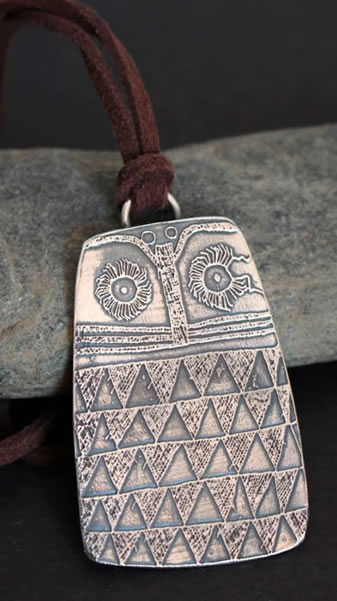
The owl, as a creature of the night, stands out as a messenger of lunar and nocturnal knowledge. This enigmatic bird is closely connected to the realm of the night, where stars shine and the secrets of the universe are revealed in the deep darkness. For the Celts, the owl embodies much more than a mere nocturnal animal. Its silent flight through the darkness is perceived as an exploration of the depths of the human soul, while its piercing gaze seems to penetrate the veils of illusion to access hidden and profound truths.
The owl is often seen as a protector of wandering souls and nocturnal travelers, offering guidance in times of doubt and uncertainty. Its piercing and mysterious call, often heard in the middle of the night, is interpreted as a warning or announcement of significant events, a portent that only the initiated can truly understand.
Associated with the moon, the owl also evokes intuitive and feminine wisdom, in harmony with the lunar cycles that govern not only the ocean tides but also the subtle rhythms of life. Its connection with the moon reinforces its role as a spiritual guide, particularly for those seeking to understand the mysteries of the inner world. As a totem animal, the owl inspires those who aim to develop their clairvoyance, intuition, and connection with lunar energies.
In Celtic traditions, the owl is often depicted alongside lunar deities such as the Celtic moon goddess Arianrhod or the goddess of wisdom, Brigid. Its presence in these mythological narratives reinforces its status as a guardian of lunar and nocturnal mysteries, revealing to the initiated the paths to spiritual enlightenment and understanding of the eternal cycles of life and death. The owl is also associated with the concept of rebirth, as, like the moon, it symbolizes the cycles of ending and renewal.
Beyond its graceful silhouette and natural elegance, the doe carries profound meanings, symbolizing the eternal quest for wisdom through the hunt. For the Celts, pursuing the doe was a spiritual journey, a search for truth and knowledge. The doe, agile and vigilant, was seen as a guide in this quest, leading hunters through the mysteries of the wild and the hidden teachings of ancient forests.
In Celtic mythology, the doe is often associated with divine feminine figures such as Flidais, the goddess of forests and wild animals, who could transform into a doe. This association strengthens the link between the doe and the sacred dimension of nature, making her an embodiment of fertility, gentleness, and beauty. She is also viewed as an intermediary between the mortal world and the Otherworld, or Sidh, a mystical realm often linked with elves and fairies.
Her graceful demeanor evokes the human soul’s quest for spiritual elevation, while her survival instincts embody perseverance in the face of life’s obstacles and challenges. Hunting the doe was thus an act of communion with the forces of nature, a way to connect with the primordial energies that govern the universe. The pursuit of the doe can be seen as a metaphor for inner exploration, where each movement of the animal through dense woods symbolizes the mysterious paths one must follow to uncover hidden wisdom.
In this quest for wisdom, the doe becomes a symbol of guidance and inspiration. Her image reflects the relentless search for truth, the pursuit of perfection, and the fervent desire to transcend the limitations of human existence. Each step in tracking the doe was a step toward enlightenment, self-realization, and the discovery of the universe’s best-kept secrets. In this context, the doe is not merely prey but a spiritual guide, helping druids and hunters achieve a deeper understanding of the world around them and draw closer to the deities.
The owl rises as a potent symbol of knowledge, vigilance, and hope that transcends the boundaries of the afterlife. Representing the connection between the visible and invisible worlds, the owl serves as a spiritual guide, intimately linked to the cycles of the night and the revelation of hidden mysteries.
Knowledge is the primary attribute associated with the owl in Celtic tradition. With its keen, penetrating eyes and scrutinizing gaze, it seems to delve into the universe’s darkest secrets. For the Celts, the owl embodies ancient wisdom and hidden knowledge nestled within the folds of the night, ready to be revealed to those who dare explore the depths of their own being. As a guardian of this knowledge, the owl was often seen as a guide for druids, offering them clarity of vision and understanding of occult truths.
Vigilance is another inherent quality of the owl. As a nocturnal bird, it watches over the dark hours of the night, safeguarding the secrets and mysteries of the darkness. Its silent presence evokes the necessity to be attentive to subtle signs and hidden omens along one’s path, reminding individuals of the importance of staying vigilant and aware in the face of life’s challenges. This vigilance also underscores the importance of patience and observation in the pursuit of spiritual knowledge, where truth is revealed to those who know how to wait and listen.
Finally, the owl embodies hope in the afterlife. Its mysterious presence invokes the belief in an existence beyond death, where souls find refuge in celestial realms. For the Celts, the owl was a spiritual guide, a messenger between worlds, offering hope for light and redemption even in the deepest darkness. In some legends, the owl is associated with the moon goddess, Arianrhod, or the goddess of wisdom, Brigid, reinforcing its role as a guardian of souls and protector of the secrets of the afterlife.
Additionally, the owl’s call, often perceived as an omen, could be interpreted in various ways depending on the context. It might signal important changes or serve as a guide during times of transition, whether in physical life or spiritual stages. This duality between an omen of death and a signal of renewal made the owl a powerful symbol of transformation, representing both the end of one cycle and the beginning of another.
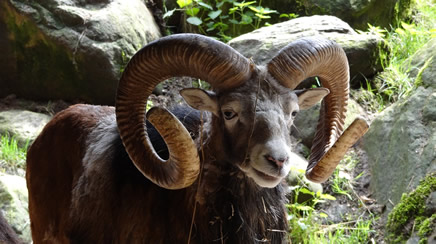
The ram stands as a powerful embodiment of the raw force of nature and masculinity. It represents qualities deeply rooted in the essence of existence, symbolizing both the power of the elements and male vigor.
The force of nature is the primary attribute associated with the ram in Celtic tradition. With its powerful horns and imposing stature, it symbolizes the vitality and robustness of the wild elements that shape the world around us. The Celts saw it as the ultimate expression of the earth’s primal power, reminding people of the need to respect and fear the untamed forces governing their environment. As a totem of this elemental strength, the ram is often linked to rites and ceremonies designed to honor the earth and its natural cycles.
Masculinity is also a quality associated with the ram in Celtic symbolism. As the dominant male of its herd, it embodies male power and firmness of character. Its proud posture and fearless behavior remind the Celts of the importance of bravery and determination in the pursuit of excellence and success. The image of the ram is frequently used to represent virile strength in battles and trials, embodying the ideal of the courageous and resolute warrior.
Furthermore, in many Celtic cultures, the ram is associated with warrior and fertility deities such as the Celtic god of war, Toutatis, or the god of fertility and prosperity, Cernunnos. Its presence in these mythological narratives reinforces its status as a symbol of virility and strength, reflecting its importance in the collective imagination of the Celtic peoples. The ram is also sometimes linked to protective deities and symbols of renewal, such as the god of vegetation and growth cycles, thereby emphasizing its role in the fertility of the earth and natural regeneration.
Additionally, the ram is often associated with elements of Celtic astrology and seasonal cycles, particularly spring. Its role as a symbol of renewal and vital force is especially prominent during this season, representing the return of life and the renewed vigor of nature after winter. This association further underscores the ram’s role as an emblem of power and fertility in Celtic traditions.
The stag emerges as a symbol deeply woven into the fabric of life and death, evocative of longevity, abundance, and cyclical renewal in a compelling manner. Its sacred status is illustrated by the shedding and regrowth of its antlers, a perpetual cycle that symbolizes the timeless rhythms of nature and the constant renewal of the natural world.
Longevity is one of the qualities associated with the stag in Celtic tradition. Its majestic appearance and resilience in the face of life’s challenges remind the Celts of the perseverance and inner strength needed to overcome trials and thrive despite obstacles. The stag’s antlers, which fall and regrow each year, are seen as a sign of perpetual regeneration, illustrating nature’s ability to renew and revive beyond individual life cycles.
Abundance is also closely linked to the stag. As the guardian of forests and plains, it symbolizes fertility and prosperity, ensuring the generosity of nature and the richness of harvests. Its presence in mythological narratives underscores its essential role in the ecological and economic balance of Celtic societies. The wealth brought by the stag is perceived not only in material terms but also spiritually, with the stag serving as a mediator between the terrestrial and spiritual worlds.
The Gaulish god Cernunnos, often depicted with stag antlers on his head, embodies the fusion of life and death, renewal and fertility. These antlers symbolize the eternal cycle of life, where each shedding is followed by new growth, reminding the Celts of the continuity of existence despite the vicissitudes of time. Cernunnos is also associated with the forces of nature, both as a protector of wild animals and forests and as an emblematic figure of earthly fertility.
Moreover, stag antlers evoke masculinity and male fertility, complementing the mother goddess in a sacred duality that symbolizes the harmonious union of masculine and feminine forces in the universe. Together, they represent completeness and balance, the very foundations of life and creation. This union between the stag and the mother goddess illustrates the balance necessary to maintain harmony in both the natural and spiritual worlds, where each element plays a crucial role in the grand cycle of existence.
The horse emerges as a complex symbol, merging warrior, solar, and aquatic attributes within Celtic tradition. It is associated with hunting, warfare, and also embodies the fiery course of the sun and moon across the infinite sky. Additionally, in its impetuous gallop, it evokes the power of the elements, sometimes representing the tumultuous waves of the ocean.
As an indispensable companion on the battlefield and in the forests, the horse embodies strength, speed, and agility—essential qualities for survival and victory. In epic tales, Celtic warriors are often depicted on horseback, with their steed symbolizing their courage and status. The horse thus represents bravery and effectiveness in hunting and warfare, as well as a deep connection to natural and spiritual forces.
The horse is also linked to the frenzied course of the sun across the sky during the day, and that of the moon at night. In Celtic mythology, horses are frequently depicted as the chariots of solar and lunar deities, transporting gods across the heavens in a perpetual cosmic dance. This association symbolizes the cyclical dynamics of life, light and darkness, and the passage of time.
Moreover, the horse can also be interpreted as a symbol of water in certain contexts. Its fluid gait and graceful movements evoke the rolling waves of the ocean, reminding one of the boundless power of natural elements. This aquatic dimension of the horse highlights the relationship between the animal and primordial forces of nature, as well as the necessity to respect and honor these powers.
The horse also holds significant importance in Celtic culture and spirituality as a symbol of freedom and movement. It represents the spiritual journey and quest for knowledge, as well as the interconnection between the earthly world and divine realms. Its role in Celtic legends and rituals underscores its importance as a messenger and guide, linking the mystical and material aspects of existence.
The dog stands as a symbol of unwavering courage and steadfast bravery. Beyond its role as a faithful companion, the dog embodies the most honorable warrior virtues, ready to defend its master with unshakable loyalty on the battlefield.
Associated with war, the Celtic dog represents the fierce strength and audacity of Celtic warriors. Its presence alongside fighters was not only reassuring but also inspiring, reminding people of the importance of courage and determination in the struggle for victory and honor. Dogs were often trained to be active partners in battle, enhancing their significance as symbols of bravery and fidelity.
As a messenger of the beyond, the dog also holds a profound spiritual dimension. In Celtic tradition, it is often seen as a guide between worlds, carrying messages between the living and the dead. Its barking in the night evokes the presence of ancestral spirits, reminding people of the continuity of life beyond physical death. This guiding role is particularly notable in beliefs associated with ancestral spirits and the concept of passage to the afterlife, where the dog is viewed as a protector of souls in transit.
Some accounts suggest that the dog replaced the wolf in Celtic mythology, symbolizing a transition between ancient beliefs and new interpretations. While the wolf was once associated with ferocity and wildness, the dog now embodies loyalty and domestication, reflecting the evolution of values and perceptions over time. This change in symbolism can also be seen as a manifestation of the evolving relationship between humans and animals, with the dog becoming a symbol of civilization and community, in contrast to the wild nature represented by the wolf.
In its role as guardian and protector, the dog is also linked to several Celtic deities, such as Lugus, the god of healing and light, who is sometimes depicted with dogs in mythological representations. This divine connection reinforces the perception of the dog as both a powerful and sacred being, a faithful companion in earthly trials and a guide in spiritual mysteries.
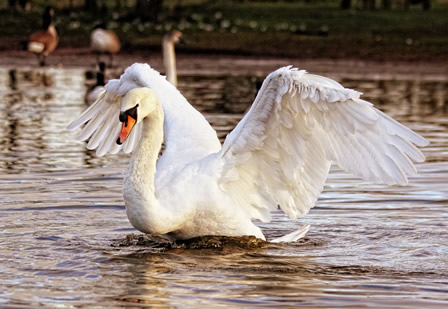
The swan stands as a powerful symbol, particularly in Ireland, where it is revered as the preferred messenger of the afterlife. It is said that beings from the *Sidh*, the inhabitants of the Otherworld, often take the majestic form of a swan when crossing the veil that separates spiritual realms from human realities. This magnificent white bird thus embodies the connection between worlds, acting as a bridge between terrestrial and celestial spheres. In some traditions, the swan is also associated with rites of passage, symbolizing the soul’s transition to the other world and marking the beginning of a spiritual journey towards light and wisdom.
The swan is also a symbol of royalty and sacredness, embodying the immaculate purity of light. Its brilliant whiteness evokes beauty and innocence, as well as femininity in its purest form. In many Celtic legends, the swan is associated with goddesses of love and fertility, representing the grace and delicacy of the feminine soul. For instance, in Celtic mythology, the swan is often linked to figures such as the goddess Brigid, who is a deity of poetry, healing, and fertility. The swan thus becomes a symbol of divine harmony and feminine creativity.
Furthermore, the swan is closely tied to love, representing romance and passion in mythological tales and traditional stories. Its graceful elegance and melodious song captivate the hearts of both men and women, evoking the deepest emotions of the human soul. In certain legends, swans are also associated with tragic love stories or magical transformations, reinforcing their role as symbols of eternal love and transcendent beauty.
Swans also appear in contexts where they embody wisdom and clear vision. Their ability to navigate both on water and in the air makes them symbols of duality and balance between the physical and spiritual worlds. This dual nature is often interpreted as a representation of the soul’s capacity to traverse material and spiritual realities, reflecting the harmony between the visible and invisible worlds.
The dragon stands as a formidable symbol of primordial strength, drawn from the depths of the nurturing earth. It represents the very embodiment of power and fertility, holding particular significance as a representation of the emperor in the Celtic pantheon.
In Celtic tradition, the dragon is often associated with cosmic and terrestrial forces. Its presence is seen as a manifestation of elemental powers rooted in the mysteries of the earth. With its shimmering scales and imposing stature, the dragon evokes the raw strength and majesty of nature in its most primitive form. Legends describe the dragon as a guardian of hidden treasures and secret knowledge buried deep within the earth, underscoring the sacred link between material wealth and ancient wisdom.
As a guardian of treasures, the dragon also symbolizes abundance and prosperity. Its fiery scales evoke the fecund warmth of the sun, while its deep roars resonate like thunder announcing beneficial rain. In Celtic tales, the dragon is frequently connected to fertile deities, such as the Celtic Earth Mother or goddesses associated with nature and fertility, embodying the sacred bond between the nurturing earth and the prosperity of its offspring. It represents the fertility of the soil, capable of producing abundance and wealth for those in harmony with natural cycles.
The dragon is also a symbol of emperorship and royalty in Celtic mythology, representing sovereign authority and governing power. In mythological narratives, it is often linked to heroes and kings who, through their courage and strength, seek to dominate and protect their realm. Its presence in ritual practices and royal artifacts reflects its importance in Celtic culture, where it embodies strength, protection, and legitimate power, ensuring the safety and prosperity of the nation.
Moreover, the dragon in Celtic tradition is sometimes associated with aspects of transformation and renewal. Its ability to regenerate, change forms, and transcend physical limits also makes it a symbol of immortality and spiritual continuity. Tales often depict the dragon as a mystical being that transcends the cycles of life and death, adding an additional dimension to its symbolism of power and fertility.
The lion stands as a powerful emblem of courage and royal power. Embodying warrior strength and sovereign majesty, it is often seen as a close companion to the dragon, sharing similar characteristics and symbolic attributes.
In Celtic tradition, the lion symbolizes bravery and power. Its flamboyant mane and proud gaze represent the very essence of courage and determination. It evokes the indomitable strength of Celtic warriors on the battlefield, reminding of the importance of boldness and firmness in the quest for victory and honor. The lion represents warrior might, inspiring heroes to exhibit resilience in the face of the greatest challenges.
As a representation of royal power, the lion is also associated with sovereignty and nobility. Its majestic appearance and aura of grandeur evoke the glorious reigns of kings and queens, symbolizing the legitimacy of power and the dignity of the crown. In Celtic myths and legends, the lion is sometimes linked to royal and heroic figures, embodying the legitimacy and authority of the sovereign, as well as the protection of the realm.
The lion shares many symbolic similarities with the dragon, both representing strength, power, and protection. Together, they embody sovereign authority and the defense of national interests. In certain Celtic traditions, this association between the lion and the dragon symbolizes the balance between raw strength and mystical wisdom, offering a complete image of the power and stability needed to govern and protect a nation.
The lion is also a symbol of resilience and regeneration. In some traditions, it is considered a being capable of overcoming adversities and emerging stronger, reinforcing its role as a symbol of persistence and renewal in the cycles of life and royalty.
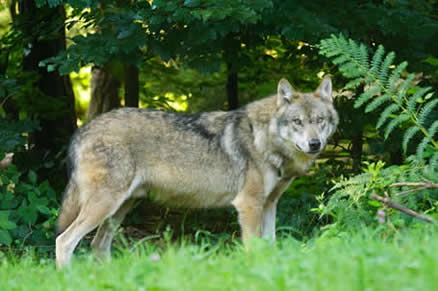
The wolf held a prominent place in Celtic culture, especially among the Gauls, where it was revered as a powerful symbol of war, courage, and loyalty. It embodied the ideal virtues of Celtic warriors, becoming an emblematic figure with deep significance.
For the Gauls, the wolf was not merely a formidable predator but also a heroic figure, representing bravery and determination on the battlefield. Its fearless strength and ability to hunt in packs made it a symbol of collective power and combative spirit. The wolf epitomized the Celtic warrior in all his fervor, ready to face the most daunting challenges with unparalleled courage and relentless strategy.
Additionally, the wolf was associated with qualities of fidelity and loyalty, which were essential in a society where honor and trust were paramount. The Gauls saw it as a steadfast companion and a fierce protector of its clan, willing to defend its group to the death. This association with loyalty reflected the importance of solidarity and unity within the Celtic community, particularly in times of crisis.
Over time, the wolf was gradually replaced by the dog in Celtic symbolism. This transition represents a broader change in Celtic society as cultural practices evolved towards a more settled and agricultural organization. The dog, as a domestic companion, became the symbol of loyalty and daily assistance, better suited to the new realities of rural and pastoral life. Despite this shift, the legacy of the wolf in Celtic culture remains significant, highlighting the complexity and depth of the relationship between the Celts and the animals that inhabited their world.
The butterfly occupies a delicate place in Celtic symbolism, leaving behind few tangible traces but carrying profound meanings. For some, it embodies the soul liberated from its earthly shell, metamorphosing into a new form of life beyond the bounds of materiality.
The butterfly evokes transformation and transcendence, symbolizing the transition from earthly life to a spiritual and ethereal existence. Just as the caterpillar transforms into a butterfly, the human soul frees itself from the mortal body to ascend to new horizons, unbound by material constraints and earthly limitations. This metamorphic cycle, from egg to caterpillar, then to chrysalis, and finally to butterfly, serves as a powerful metaphor for rebirth and renewal. In Celtic mythology, this cycle could also symbolize reincarnation or the continuity of the soul through various lives.
In addition to its spiritual connotation, the butterfly is also seen as a divine messenger. Its ability to appear suddenly and move gracefully from one place to another makes it a suitable bearer of messages from the gods or ancestors. It is often regarded as a link between worlds, acting as a bridge between the terrestrial realm and the celestial spheres.
The butterfly is also closely associated with the spring season, representing renewal after winter. Its emergence in spring is seen as a sign of nature’s rebirth and life following the apparent death of winter, aligning with Beltane celebrations, which honor life and fertility.
Finally, the butterfly is frequently linked to goddesses of love or fertility in certain Celtic legends, embodying the grace and delicacy of the feminine soul. Its presence in Celtic art and mythology highlights its significance as a symbol of beauty, renewal, and spiritual connection.
The fish stands as a captivating emblem of wisdom and knowledge, holding the mysteries of the ocean’s depths within itself. Beyond its animal aspect, it embodies a multitude of meanings, evoking immortality and the eternal quest for truth.
In Celtic traditions, the fish is often associated with wisdom and knowledge. Its aquatic habitat links it to the mysteries of primordial waters, symbols of the depths of the unconscious and the hidden sources of human wisdom. By exploring the tumultuous waters of life, the fish inspires people to dive deep within themselves to uncover hidden truths and valuable teachings of the universe.
In Celtic mythology, fish are also seen as spiritual guides, navigating through the invisible currents of existence to lead souls to the discovery of deeper truths. Their connection to water, a central element in Celtic beliefs, ties them directly to notions of purification, regeneration, and rebirth. Water is viewed as a gateway to the other world, and fish, which live within it, are symbols of the connection between life and death, as well as guardians of the mysteries of the beyond.
Among fish, the salmon particularly stands out as a symbol of immortality. In many Celtic legends, the "Salmon of Wisdom" (or "Salmon of Knowledge") is a prominent figure. It is renowned for its exceptional life cycle, swimming upstream to spawn in the very place where it was born. This process of regeneration evokes the continuity of life through generations, symbolizing the eternity of the soul and the perpetuity of knowledge passed down from generation to generation.
In some versions of the myth, eating the flesh of this salmon grants infinite wisdom, a theme that underscores the importance of knowledge and accumulated experience. The salmon thus becomes a metaphor for the quest for understanding, where effort, perseverance, and a return to the sources are essential for achieving a deeper comprehension of the world.
Moreover, the Celts considered rivers and lakes, the natural habitats of fish, as sacred places, gateways to the other world. Thus, the fish, as a resident of these sacred waters, was often seen as a divine messenger, bearer of revelations and prophetic visions.
The wren emerges as a poignant symbol of priesthood and spirituality, distinguished by its delicate yet powerful presence in the avian world. In contrast to the raven, which embodies warrior strength and bravery, the wren represents the serene wisdom and spiritual depth of the druids, the custodians of sacred knowledge and ancient rituals.
Despite its small size, the wren is revered as the bird of the druids, those spiritual guides and keepers of Celtic tradition. It is often seen as a divine messenger, capable of penetrating the deepest secrets of the universe. With its tiny stature and melodious voice, it embodies modesty and discretion—qualities essential for those seeking truth and knowledge beyond material appearances. Its gentle and soothing song evokes the divine presence and communion with the invisible forces governing the cosmos. In some traditions, the wren is also viewed as a solar bird, associated with light and renewal, further reinforcing its connection with wisdom and spiritual awakening.
As a symbol of priesthood, the wren reminds individuals of the importance of spirituality in their quest for truth and spiritual enlightenment. It represents the intimate connection between humanity and the divine, reminding druids and their followers of the need to cultivate a personal relationship with the sacred forces of the universe. In Celtic tales, the wren is sometimes depicted as a hidden king, symbolizing spiritual royalty manifested not through force or dominance, but through wisdom and humility. Its selection as the king of birds in some legends reflects the value the Celts placed on intelligence and spiritual cunning over brute strength.
Additionally, the symbolism of the wren is evident in the celebration of "Wren Day" or "The Wren Hunt," an ancient Celtic custom still practiced in some regions, where this bird is honored, often in the context of renewal and transition between the old and the new.
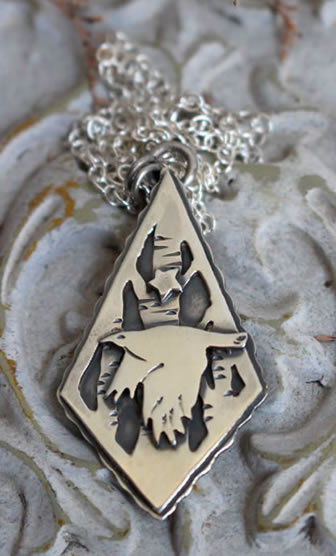
The raven stands as a formidable symbol of warrior sovereignty, embodying the power of gods of war and hunting. Associated with deities such as the goddess Catudobua, who can take the form of this bird, and Lug in his warrior aspect, the raven represents fury and bravery on the battlefield, leading warriors to victory with relentless determination. Its presence, often seen as an omen, signifies imminent death or glorious triumph, reminding fighters of the importance of courage in the face of adversity.
Yet, beyond its martial role, the raven is also a symbol of wisdom and profound knowledge. Its remarkable intelligence and observant behavior make it a spiritual guide for those seeking to unravel the mysteries of the universe. In many Celtic cultures, it is revered as a messenger of the gods, carrying divine messages between worlds and revealing the secrets of the afterlife to courageous mortals. The raven is frequently associated with prophecy, its cry interpreted as a sign of divine will or forthcoming events, which only the wisest can decipher.
The raven is also linked to hunting, evoking the cunning and agility required to track and capture prey. Its piercing call echoes through dark woods, heralding the imminent hunt and inspiring both fear and admiration in bold hunters. Through its ability to survive in harsh environments, the raven is seen as a symbol of resilience, survival, and mastery of the elements. It is not only a participant in the cycle of life and death but also a reminder of the invisible forces governing the natural world.
Finally, the raven embodies a fascinating duality in Celtic tradition: both destructive on the battlefield and a wise spiritual guide, it represents the contradictory forces of destruction and creation, death and renewal, highlighting the inextricable link between these aspects of existence.
The wild boar stands as a formidable symbol of combativeness, invincibility, and spiritual power. Representing the essence of warrior strength and determination, it embodies vigor and resilience in the face of adversity. To the Celts, the wild boar was not merely a formidable prey but a manifestation of the qualities every warrior aspired to possess: bravery, endurance, and an indomitable spirit.
Hunting the wild boar was not simply a quest for food or trophies but a sacred ritual aimed at acquiring knowledge and wisdom. The Celts believed that in pursuing the wild boar, they could access the hidden mysteries of the universe, but first, they had to gain the permission of the gods, thus honoring the divine forces that govern the world. This hunt was often viewed as a rite of passage for young warriors, allowing them to prove their worth and connect with the spiritual forces that rule the cosmos.
Beyond its martial aspect, the wild boar is also a symbol of fertility and abundance. In many Celtic cultures, it was revered as the guardian of the secrets of life and death, embodying the creative power of nature and the promise of cyclical renewal. The wild boar, with its raw strength and role as protector of the forests, was also associated with Mother Earth, symbolizing nurturing strength and the perpetual cycle of life.
The wild boar derives its knowledge and wisdom from the sacred acorn of the oak trees, which were venerated in Celtic tradition for their deep spiritual connection to the cosmos. By consuming this sacred food, the wild boar absorbs the vital force of the sacred tree, becoming a living symbol of the druid and his esoteric knowledge. The oak, being the king of the forests, reinforces the boar’s stature as a creature possessing superhuman strength and wisdom. For those who dared to consume its flesh, youth, health, and wisdom were promised, allowing them to transcend the limits of human existence and access the realms of divinity. In this sense, the wild boar is not only a symbol of physical strength but also a bridge between the material world and the spiritual realms, where ultimate knowledge and immortality can be attained.

The salmon stands out as a prominent symbol of sacred knowledge, embodying the precious wisdom that guides humanity toward spiritual and intellectual enlightenment. Like the boar, the salmon represents the essence of esoteric knowledge but with a particularly mystical and captivating aura. This fish, swimming upstream with unwavering determination, is often seen as a metaphor for the inner quest of man to attain higher wisdom.
Among the many salmon, one stands apart: the Salmon of Knowledge, also known as the Salmon of Llyn Llyn. According to legend, this salmon consumed the nine acorns of the sacred Tree of Knowledge, whose waters were guarded by the rivers Boyne or Shannon. As a result, it grew to a colossal size and absorbed all the knowledge of the world. This legendary salmon symbolizes the acquisition of wisdom through experience and the trials of life.
The pursuit of this salmon is therefore a vital quest for those who aspire to supreme wisdom. The one who captures and consumes it is destined to become the keeper of this divine knowledge, receiving the secrets of the universe and the transcendent wisdom that lies at the heart of all creation. This legend highlights the idea that true knowledge is not easily obtained: it requires a spiritual journey, sustained effort, and often, an initiatory trial. By eating the Salmon of Knowledge, the hero or druid gains not just information but a deep and intuitive understanding of the mysteries of existence.
Moreover, the salmon is also associated with the cycle of life, death, and rebirth. Its instinctive return to the waters where it was born to spawn evokes the notion of returning to one’s origins, reminding the Celts that ultimate wisdom lies in understanding natural cycles and living in harmony with the primordial forces of nature.
The serpent carries complex and ambivalent meanings, often associated with concepts of regeneration, fertility, and even the underworld, reflecting the inherent duality of this mysterious creature. In Celtic tradition, the serpent symbolizes both the forces of life and death, navigating between the visible and invisible worlds with an ease that makes it both fascinating and fearsome.
On one hand, the serpent is often linked to the underworld and subterranean realms, symbolizing dark forces and the mysteries of the afterlife. Its habit of slithering into the depths of the earth evokes hidden mysteries and the darkness of the unconscious, making it a guardian of esoteric secrets and hidden truths. In this role, it is seen as a mediator between the world of the living and that of the dead, a guide for those who dare to explore the darkest corners of their souls.
On the other hand, the serpent is also associated with regeneration and transformation, symbolized by its ability to shed its skin and be reborn in a new form. This capacity for renewal suggests resilience and the soul’s ability to transcend life’s trials and be reborn in a higher, more enlightened state. The Celts saw this shedding as a parallel to the natural cycle of life, death, and rebirth, a process essential for achieving spiritual fulfillment.
In some traditions, the serpent is also a symbol of fertility, as it burrows deep into the earth to lay its eggs, embodying the sacred connection between life and the nourishing earth. Its presence evokes the creative power of nature and the promise of cyclical renewal, reminding people of the need to respect and venerate the cycles of life and death. It embodies the vital energy that flows through the soil, animating plants, animals, and humans, and serves as a reminder of the importance of harmony with nature.
Additionally, in some Celtic tales, the serpent is seen as a symbol of healing and protection. This seemingly paradoxical view underscores the idea that the serpent’s power can be both destructive and curative, depending on how it is invoked.
The bull, adorned with its majestic three horns, embodies the power and strength of the god Enlil, a divine figure revered for his influence over the elements and fertility. Although Enlil is a Mesopotamian deity, the mention of his three horns might resonate with the multifaceted aspects of divine power in various cultures, including Celtic traditions, where the bull is often associated with gods such as Esus or Tarvos Trigaranus. The latter, for instance, is depicted as a bull with three cranes perched on its back, symbolizing triadic power and the cycles of life.
Its imposing presence in ritual practices underscores its crucial role in Celtic cosmology, where it is perceived as a sacred symbol of virility and creative power. In Gallic folklore, the bull is also linked to myths of fertility and renewal, embodying the vital force that animates fields and herds.
At the heart of Gallic rites, the bull was often the focus of conflicts and thefts, as its impressive strength and profound symbolism made it a source of power and prestige. Capturing or controlling the bull was considered a highly valuable act, ensuring divine favor and prosperity for those who succeeded in mastering it. In this context, the bull becomes a metaphor for the struggle for dominance, where mastering this imposing creature symbolizes the conquest of natural and spiritual forces.
As a symbol of virility, the bull represents raw strength and fertility, reminding men of their role in the perpetuation of life and the preservation of the natural order. In Celtic legends, there are tales where the bull is linked to sacrificial rituals intended to ensure the fertility of the land and the prosperity of the people. Its imposing image and majestic stature evoke the power of the sacred masculine, inspiring respect and admiration among those who venerate it. Thus, the bull embodies not only physical strength but also creative potential, connecting man to the earth and the natural cycles that govern existence.
To learn more about the sacred animals of the Celts, we recommend you the following books:
Druidic sanctuaries
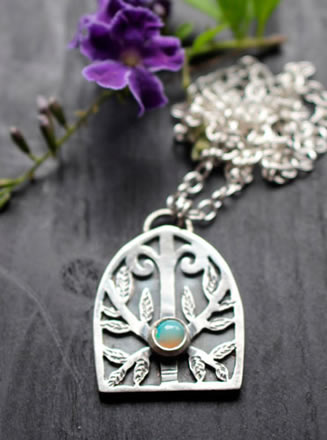
In the collective imagination, the image of the Celtic sanctuary emerges as a haven of peace, a sacred space nestled in the heart of lush nature, where revered trees and crystal-clear springs infuse the atmosphere with a mystical aura. It is here, in this enchanting setting, that druids and druidesses, dressed in white like divine messengers, commune with the forces of nature, establishing a deep and sacred connection with the spirits that animate the world around them.
In the Gaulish language, the sanctuary is referred to as a nemeton, a closed and consecrated space where the religious and spiritual practices of the Celts took shape. The word likely derives from the Proto-Indo-European root "nem-", meaning "sacred space" or "sacred grove," highlighting the importance of nature in Celtic spirituality. Scattered across the Celtic territory, these sacred sites were often adorned with neutralized weapons (broken or twisted), symbolizing the end of conflicts and the establishment of divine peace. Additionally, traces of animal and even human sacrifices have been discovered there, attesting to sacrificial rituals intended to appease the gods and strengthen the bond between humans and the divine.
It is believed that druids used these sanctuaries to practice justice, divination, and prayers, acting as mediators between the earthly and spiritual realms. The choice of sacred sites was carefully orchestrated, with druids often reusing Neolithic megaliths such as dolmens and menhirs, or seeking out sacred trees and pure water sources to channel the telluric and celestial energies that permeated these magical places. Trees like the oak were considered pillars of the world, bridges between heaven and earth, further enhancing the sacred nature of the nemeton.
Thus, in Celtic tradition, the sanctuary is not merely a place of worship but represents a point of convergence between the material and spiritual worlds, a place where nature and the divine meet in sacred harmony, guiding souls toward eternal light and wisdom. The nemeton becomes a microcosm of the Celtic universe, where every element—whether a tree, a spring, or a stone—embodies a facet of the divine, reflecting the invisible forces that govern the cosmos.
The Celtic symbols
In the absence of direct written records, the interpretation of Celtic symbols often remains the subject of passionate debates and varied interpretations. This ambiguity sometimes leads to the use of the term "pseudo-Celtic" to describe certain motifs, as it is undeniable that many popular symbols, widely used today, have been influenced by elements of Christianity or have emerged recently in a commercial context.
This confusion is exacerbated by the fact that many Celtic symbols have been reinterpreted and appropriated over time, often within a modern context of commercialization or Celtic revival. Patterns that were once imbued with deep spiritual meanings may have been distorted or simplified to cater to contemporary aesthetic tastes or commercial imperatives. For example, the growing popularity of these motifs in jewelry, textiles, or decorations can sometimes dilute their original meaning, transforming sacred symbols into consumer goods.
Despite these challenges, scholars and enthusiasts continue to explore and analyze Celtic symbols, relying on archaeological evidence, historical sources, and oral traditions to attempt to decipher their original meaning. The study of ancient inscriptions, archaeological artifacts, and mythological narratives provides valuable clues about the use and significance of symbols in their historical context. While the exact nature of many symbols may remain uncertain, their richness and complexity continue to inspire imagination and captivate minds, reflecting the depth and vitality of Celtic culture through the ages.
These symbols, even when distorted or misinterpreted, remain valuable witnesses to an ancient culture, inviting deeper exploration of their history and significance. They remind us of the richness of Celtic traditions and how they have influenced and continue to influence our understanding of the past and our appreciation of the natural world.
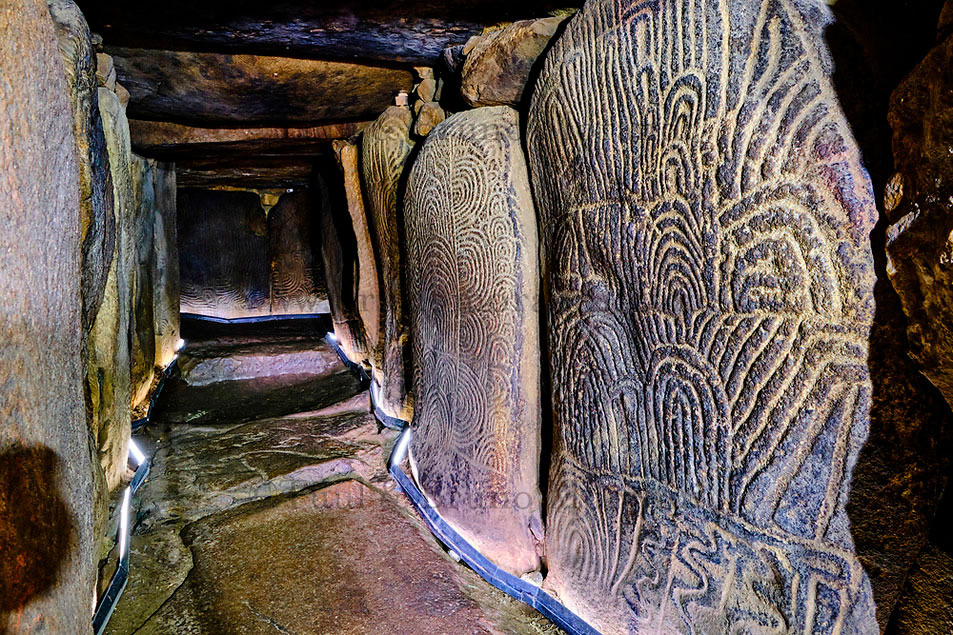
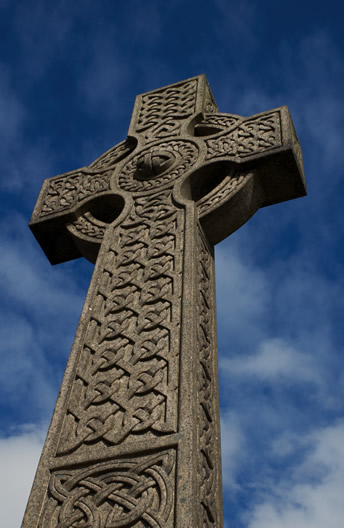
The Celtic cross, also known as the nimbated cross, is a complex symbol that combines a cross with a circle, representing the union of the spiritual and the earthly. This cross has several distinct variations, each carrying its own particular significance:
- The Latin cross integrated into the Celtic design: When one arm of the cross extends noticeably longer than the others, resembling a base or foot, it is referred to as the Latin cross integrated into the Celtic motif. This configuration reflects the Christian influence on Celtic traditions. The extended arm often symbolizes aspects of the Christian faith, such as the Holy Eucharist, the five wounds of Christ, and His Sacred Heart. As early as the 7th century, these crosses served as places of worship in the absence of formal churches, marking the fusion between ancient Celtic beliefs and the emerging Christian faith. This cross also represents the triumph of Christianity over the old pagan traditions.
- The cross with equal arms: If the cross features arms of equal length, it takes on a different meaning. These regular crosses are often associated with specific political and religious spheres of the medieval Christian era. They symbolize balance and harmony and may reflect the issues of power and faith that marked medieval society. Their use in monuments and artifacts attests to the central role of religion in structuring medieval Christian communities.
- The Cross Inscribed in a Circle - Solar Wheel: Ancient motifs feature the cross inscribed within a circle, forming solar wheels. These ancestral symbols date back to the Neolithic era and were revered for their association with the sun and natural cycles. They expressed the deep connection between humans and cosmic forces, illustrating the importance of the sun in Celtic rituals and beliefs. The solar wheel represents the eternal cycle of time and rebirth, emphasizing continuity and renewal in both nature and spiritual life.
The triskelion, also known as the triskèle (or triskell), represents a fascinating variation of the spiral motif, widely used in Celtic art. Although its origins date back long before the Celtic period, it remains one of the most iconic symbols of this ancient culture. The direction of its rotation can vary, adding an additional layer of symbolic interpretation.
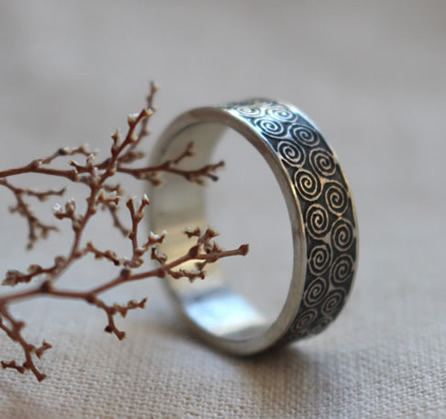
This complex motif is often associated with a multitude of profound meanings:
- The Three Worlds: It could represent the three worlds—physical, spiritual, and celestial—thus evoking the connection between different planes of existence. This interpretation is based on the Celtic belief in a world divided into multiple interconnected layers or realms.
- The Phases of the Sun: It may symbolize the three phases of the sun’s movement—dawn, noon, and dusk—reflecting the daily cycle of light and darkness. This association underscores the importance of the sun in the rhythm of life and Celtic rituals.
- The Primary Elements: The triskelion might represent the three primary elements—water, earth, and fire. These elements were considered essential in Celtic cosmology, representing the fundamental forces that govern the natural world.
- The Celtic Gods: It could also refer to the three principal Celtic gods, Lug, Ogma, and Dagda, thus embodying the richness of Celtic cosmology. These divine figures symbolize different aspects of power and wisdom in Celtic mythology.
- Time and Life Cycles: The triskelion can also represent time—the past, present, and future. It evokes the stages of life—childhood, adulthood, and old age—emphasizing the importance of natural and human cycles.
- Spiritual Harmony: Other interpretations highlight the spiritual dimension of the triskelion, viewing it as a symbol of perfection and balance between the spirit, body, and soul, thus embodying inner harmony and spiritual fulfillment. This perspective emphasizes the quest for personal balance and wisdom.
- The Sun and Celestial Path: The most commonly accepted version of the triskelion is that associated with the sun. The term "triskelion," literally meaning "three legs," is often considered an Indo-European term describing the sun’s path across the sky (dawn, noon, dusk), underscoring the sun’s significance in Celtic cosmology and spirituality. The spiral form of the triskelion evokes the perpetual motion and cosmic cycle of the sun.
- Social Order: Additionally, the triskelion could reference the traditional social order of Celtic society, divided into three distinct classes: the spiritual, represented by bards and druids; the temporal, embodied by kings; and the material, consisting of peasants and artisans. This interpretation highlights the importance of social organization in the daily life of the Celts and the central place of the triskelion in their worldview. Each branch of the triskelion could symbolize the balance and interdependence of the different social classes in Celtic society.
The love knot, also known as the lovers’ knot or the Celtic love knot, is a delicate and intricate motif representing two intertwined hearts. This symbolism evokes an infinite and indestructible bond of love, a spiritual and emotional union between two beings.
According to tradition, the Celts would exchange these love knots to seal their union and express their mutual commitment. These knots highlight the importance of love and romance in Celtic culture, emphasizing the depth of human relationships and the value placed on harmony and emotional connection.
- A Symbol of Fidelity and Eternity: The knot’s design, which has no beginning or end, is often interpreted as a symbol of eternal fidelity. The Celts saw in these knots a reflection of the infinity of life’s cycle, where love endures beyond time and death, creating an unbreakable bond.
- Variations and Their Significance: While the love knot is often depicted as two intertwined hearts, there are variations where the motif is more abstract, not directly representing hearts but rather curved and interwoven lines. These designs can symbolize different aspects of union, such as the balance between the individual and the community or the complementarity between masculine and feminine energies.
- Deep Spiritual Roots: In Celtic culture, knots are also associated with profound spiritual concepts. The love knot can thus be seen as a manifestation of the union of souls, reflecting a connection that transcends the material world. This spiritual vision emphasizes the idea that true love is a path to enlightenment and fulfillment.
- Connection to the Trinity: Some scholars see in the Celtic love knot a reference to the trinity, a recurring concept in Celtic symbolism (like the triskelion). The intertwined motif could symbolize the three aspects of love—physical, emotional, and spiritual—that come together to form a complete and harmonious union.
Beyond their romantic significance, love knots can also represent strong and enduring family ties, symbolizing affection and loyalty between parents, children, and close relatives. Their complex and intertwined design reflects the intricacies of human relationships and the beauty of unity in diversity.
In a broader context, love knots can also evoke communal bonds, highlighting the importance of solidarity and mutual support in Celtic society. The interwoven motifs remind us that each individual is an integral part of a greater whole, where every bond contributes to the strength and resilience of the community.
The shield of protection, an ancient symbol of defense and security, was believed to be worn by the Celts to safeguard against a multitude of dangers, whether they were physical threats like enemies on the battlefield or more subtle perils such as evil spirits or diseases that haunted the Celtic imagination. Beyond its martial function, the Celtic shield was often perceived as a symbolic barrier between the physical and spiritual worlds. It served not only to repel visible attacks but also to protect the bearer from invisible influences, such as curses or bad omens.
Often rectangular in shape, this sacred shield held deep significance as a protective amulet, granting its bearer an aura of security and strength in the face of life’s challenges. While Celtic shields were often rectangular, they could also take oval or circular forms, each shape associated with particular meanings. The materials used—whether wood, leather, or metal—added another layer of symbolism, with iron, for instance, being perceived as a metal capable of warding off dark forces.
As an amulet, the shield was often decorated with sacred patterns or magical symbols, imbued with power and meaning. These ornaments served to enhance the shield’s protective effectiveness by attracting positive energies and repelling malevolent forces. Commonly used motifs included spirals, triskelions, and interlaced designs, each with a protective function. Spirals symbolized continuity and the cycle of life, while triskelions represented balance and harmony between opposing forces. The interlaced designs, with their endless intertwined lines, symbolized the interconnectedness of all things and offered protection against disunity and spiritual disintegration.
It is likely that shields, as protective amulets, were activated or consecrated during Druidic rituals. These rituals might have included prayers, incantations, and the use of sacred herbs, conferring the shield with its protective properties. Druids, as guardians of occult knowledge, played a key role in the creation and blessing of these objects.
The Tree of Life, sometimes referred to as Crann Bethadh, holds immense importance in Celtic symbolism, as we have already explored through the theme of trees. This iconic representation of life is often depicted as a tree with intertwined branches spreading out on one side, contrasting with tangled roots on the other, all enclosed within a sacred circle.
The image of the Tree of Life, with its branches and roots in perfect symmetry, represents the balance between the opposing forces of the cosmos, such as life and death, light and darkness, or the material and the spiritual. The surrounding circle symbolizes the eternal cycle of life, with no beginning or end, and emphasizes the interdependence of all elements of the universe.
The Tree of Life embodies the sacred and intimate connection between heaven, earth, and the world of the ancestors. It symbolizes the vitality of nature and the eternal cycle of life, evoking the deep connection between humanity and its natural environment. The Tree of Life can also be interpreted through the triple division of the Celtic universe: the sky (where the gods reside), the earth (the domain of mortals), and the Otherworld (where spirits and ancestors continue to exist). Each part of the tree corresponds to one of these dimensions, thus unifying the cosmos in a harmonious structure.
Additionally, it expresses concepts of rebirth, immortality, and fertility, reminding each person of the promise of renewal and constant growth. The Tree of Life played a central role in Druidic rituals, where it was often considered a sacred axis, or "axis mundi," connecting the physical and spiritual worlds. Druids, as mediators between humans and the gods, often used the tree as a focal point during ceremonies, invoking the energies of nature to guide and protect the community.
Beyond its physical representation, the Tree of Life evokes spiritual and intellectual qualities such as wisdom, strength, and longevity. It is regarded as a guardian of ancient knowledge, its branches reaching towards the heavens to capture divine wisdom, while its roots delve deep into the earth, grounded in ancestral truths.
The Celtic Tree of Life is also a powerful symbol of regeneration, not only on a physical level but also on a spiritual one. It serves as a reminder that life is a continuous cycle of death and rebirth, where every end is the prelude to a new beginning. The roots reach into the past, while the branches strive towards the future, symbolizing the transmission of wisdom across generations.
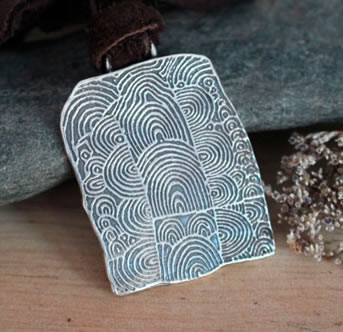
Celtic spirals, iconic motifs of great antiquity, bear witness to profound wisdom and symbolism, having endured from prehistoric times through the Celtic era. Their presence dates back to the Neolithic period, leaving their mark on majestic megaliths like Newgrange or Gavrinis, where they were intricately carved into stone with remarkable precision.
These enigmatic spirals, true testaments to the artistic and spiritual genius of the ancient Celts, are often interpreted as representations of the vital energy emanating from the sun or as manifestations of the radiant light of Éostre, the Celtic goddess of the dawn. They also evoke cosmic harmony, symbolizing the ebb and flow of the natural forces that govern the universe.
Spirals may also represent water, a sacred element for the Celts. They recall the currents of rivers and oceans, as well as the sacred springs where the Celts would come to purify themselves or communicate with the spirit world. This association with water reinforces the idea that spirals are symbols of flow, constant movement, and transformation.
Celtic spirals are often perceived as guides toward consciousness and spirituality, representing an inner journey toward self-knowledge and understanding of the universe. They can also be interpreted as a symbolic map of the landscape, stars, and planets, highlighting the sacred connection between humanity and its environment.
The triquetra, also known as the Celtic triangle, is a motif composed of three interlaced ovals forming a triangle, often accompanied by an embedded or surrounding circle that symbolizes the eternal and unchanging nature of life’s cycles and their interconnectedness. The shape of the triquetra, with its three interwoven ovals, not only illustrates interconnection but also embodies the idea that distinct elements can combine to form a harmonious whole. This concept is fundamental in Celtic spirituality, where the diversity of natural and spiritual forces is seen as complementary and interdependent.
Over the centuries, this complex symbol has inspired many interpretations. Some view the triquetra as a protection against death, while others associate it with the triple goddess, representing the maiden, the mother, and the crone, the three aspects of the Celtic goddess. In this context, the triquetra symbolizes the cycles of life, fertility, and nature, reinforcing the idea of continuity and perpetual renewal. Other interpretations link the triquetra to natural elements or human relationships. The three points of the symbol could represent the three realms of earth, sea, and sky, or the three fundamental elements of the universe: water, earth, and fire. This symbolic versatility reflects the deep connection between the triquetra and the forces of nature.
The triquetra may also have been used in ritual practices to invoke the protection of the three realms or to balance the elements in a person’s life, serving as a talisman for those seeking to align their lives with natural and spiritual forces.
Though often associated with Celtic culture, the origin of the triquetra remains debated. The motif appears on runestones in Northern Europe and on Germanic coins, suggesting a Norse rather than Celtic origin. This symbol’s ability to transcend cultural boundaries demonstrates its universality and timelessness. Its adoption by Christianity as the "Trinity Knot," representing the Father, the Son, and the Holy Spirit, illustrates how pagan motifs were reinterpreted to fit into new spiritualities.
The sailor’s knot, also known as the love knot or union knot, is a simple yet powerful representation of two interwoven strands. This entwined band symbolizes love, friendship, affection, and harmony, capturing the idea of unity and deep connection between individuals. Beyond its immediate significance, the sailor’s knot also embodies the strength and resilience of human relationships. Just as the strands intertwine to form a strong knot, people bound by this symbol are united in an indissoluble relationship, capable of overcoming life’s trials and challenges together.
Historically, this simple yet evocative motif finds its roots in maritime traditions, where it symbolized loyalty and camaraderie among sailors. In this context, the sailor’s knot reflects mutual trust and assistance, crucial values for those sharing the hardships of life at sea. This symbol is often used in ceremonies to represent solemn commitments, marking the importance of bonds forged in adversity.
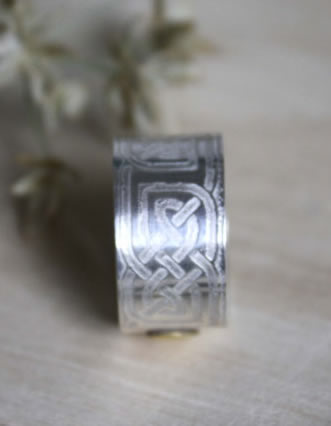
Celtic knots, sometimes referred to as infinity knots, are iconic motifs of Celtic culture, characterized by their uniqueness and complexity. Each knot is formed from a single, continuous line with no apparent beginning or end, elegantly looping and intertwining to create an infinite array of decorative patterns. Although these knots are closely associated with Celtic culture, their history dates back long before the Celtic era. The earliest examples of these designs appear as early as the 3rd century BCE among the Romans, attesting to their antiquity and universality.
Over time, Celtic knots were adopted and adapted by the Celts, becoming a central element of their craftsmanship and artistic expression. Symbolizing eternity and the interdependence of life, these patterns capture the essence of Celtic philosophy, emphasizing the deep connection between all living beings and nature. Their continuous, unbroken form evokes the endless cycle of life, death, and renewal, reminding us of the constancy and permanence of the universal forces that govern the world.
In Celtic culture, knots are not merely decorative; they are often regarded as protective talismans, reinforcing the notion of continuity and protection in daily life. They were carved on tombstones, inscribed on jewelry, or incorporated into embroidery to ensure the protection and blessing of the gods.
Beyond their philosophical and spiritual symbolism, Celtic knots are also admired for their aesthetic beauty and geometric complexity. Their presence on Christian monuments and manuscripts from the 5th century CE onwards attests to their significance in medieval European art and culture. They were often used to embellish sacred art, such as the Lindisfarne Gospels or the Book of Kells, where they expressed the deep spirituality of the time and served to glorify sacred texts.
The Claddagh ring is an iconic piece often mentioned among Celtic symbols. This distinctive ring features a heart topped with a crown, held by two gracefully intertwined hands, creating a symbol rich in meaning and tradition. Traditionally, this ring represents friendship, love, and loyalty, with each element carrying its own deep significance.
Although the original design of the Claddagh ring is not strictly Celtic, it is inextricably linked to Irish heritage. This piece of jewelry has its roots in a humble fishing village in 17th-century Ireland, and its name, "Claddagh," derives from the area where it was created, near the city of Galway. Since then, this iconic ring has transcended the boundaries of its modest origins to become a universal symbol of affection, loyalty, and emotional connection.
The heart at the center of the ring represents love, the crown symbolizes loyalty, and the hands holding the heart embody friendship. The combination of these elements reflects the essential values that defined human relationships at the time and continue to resonate today. When given as a gift, the way the ring is worn can also carry special significance: worn on the right hand with the heart facing outward, it indicates that the wearer’s heart is free; worn on the right hand with the heart facing inward, it signifies that the wearer is in a committed relationship; finally, worn on the left hand with the heart facing inward, it symbolizes marriage and mutual commitment.
The Awen, an iconic symbol of Neo-Druidism, embodies the essence of Celtic spirituality. Composed of three small circles from which three lines emerge, all enclosed within a larger circle, the Awen goes beyond mere decorative design to reflect a profound connection with the divine and celestial inspiration.
The term "Awen" comes from Celtic languages such as Breton and Welsh, where it denotes divine inspiration granted to bards. This sacred symbol thus represents the very essence of spiritual illumination and inner awakening, opening the doors to communication with the gods and the mystical forces of the universe. Druidic tradition associates it with the voice of the ancients, the ancestral wisdom that guides and inspires individuals on their spiritual path.
Each element of the Awen carries rich symbolic meaning: the three circles may represent the three Celtic worlds—the world of ancestors, the world of the living, and the world of spirits—or the three fundamental elements of nature: earth, water, and sky. The three lines that emanate from them can evoke the three rays of divine light, the aspects of knowledge—wisdom, truth, and understanding—or even the three essential qualities of the bard: inspiration, imagination, and creativity. These lines, extending from the circles, also symbolize the flows of spiritual energy that traverse the universe.
The circle surrounding the entire design represents unity and harmony, underscoring the interconnectedness of all existence and the cyclical nature of life. It reminds those who contemplate the Awen of their sacred bond with the divine, nature, and the source of all inspiration. This symbol is thus a constant call to seek inner harmony and to celebrate the spiritual light that illuminates our journey.
Runes, often mistakenly associated with the Celts, actually have their origins in the northern and Scandinavian lands, where they served as a writing system for centuries. This confusion about their origin dates back to the 17th century when a renewed interest in ancient cultures led to the blending and inaccurate assimilation of different European traditions.
The Celts, on the other hand, used several alphabets for writing, reflecting the cultural diversity of their peoples. Among these systems were Lepontic, Celtiberian, Greek, and Latin. However, Ogham remains the most emblematic of Celtic writing systems. Ogham, an ancient alphabet, is characterized by lines and marks engraved on sticks or stones, with each symbol representing a letter of the Celtic alphabet.
Though distinct, runes and Ogham share similarities in their symbolic and magical usage. Both systems were often associated with divinatory practices and mystical rituals. They were used to communicate with the gods, predict the future, or invoke supernatural powers. This convergence in practices and symbolism highlights the importance of writing in Celtic and Nordic societies, as well as their shared belief in the mystical power of symbols and words.
Runes, as a runic writing system, are particularly known for their use in inscriptions on stones and various objects, as well as for their role in the magical and divinatory practices of Germanic and Nordic cultures. Ogham inscriptions, often found on megalithic stones in Ireland and Britain, reveal another facet of the cultural and spiritual richness of the ancient Celts.
To learn more about Celtics symbols, we recommend you the following books:
Celtic fantasy
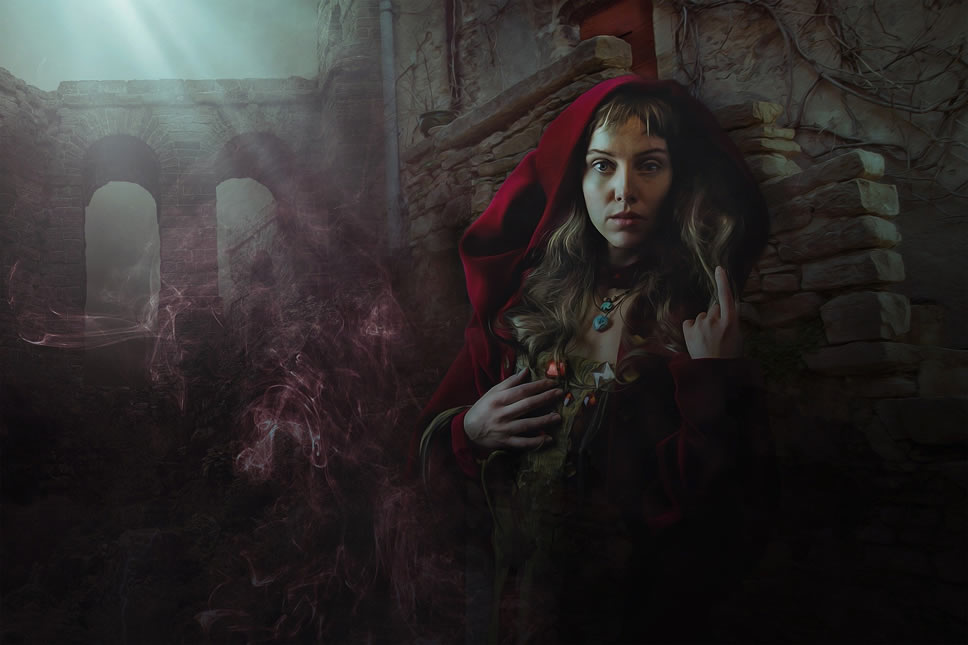
Our perception of the Celtic world, druids, and priestesses has been profoundly shaped by the Romantic period, where imagination and fascination with mystery often eclipsed historical reality. Due to the lack of direct written sources from the druids themselves, many symbols and concepts have been widely imagined and interpreted over the centuries.
It can be unsettling to discover that many of these symbols and ideas have no genuine Celtic origin. The druids left no written record of their beliefs and practices, making it challenging to differentiate between historical facts and the fantastical elements that have become associated with Celtic culture over time.
That’s why, in our shop, we have chosen to focus on symbols and elements that can be traced back to Celtic history and tradition. You will find fewer classical symbols and more evocations of nature, plants, trees, and animals, which are fundamental elements of Celtic spirituality.
However, it is undeniable that the fantastical and magical aspects of Druidism continue to captivate and enchant many people. The magical worlds depicted in tales and legends often draw inspiration from Celtic and medieval beliefs, creating a universe where the lines between reality and imagination blur.
Who among us hasn’t been enchanted by the tales of Merlin and the knights of the Round Table, or the humorous adventures of Panoramix and his magic potion in Asterix and Obelix? These stories transport us to a fantastical realm where magic and adventure intertwine, sparking our imagination and wonder.
In this magical world, we encounter a multitude of fantastical creatures and monsters from Celtic tales and legends: mysterious fairies, majestic unicorns, fearsome dragons, malevolent witches, enchanting elves, and powerful magicians. These mythical beings are an integral part of the Celts' mythological and cultural heritage, adding a magical and mysterious dimension to their rich tradition.
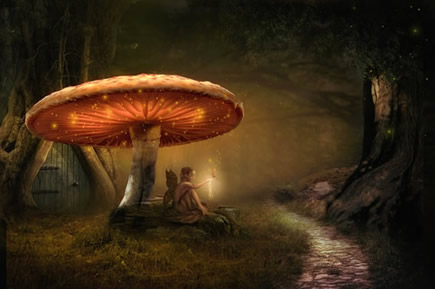
In Irish legends, Brun of Cualnge stands as a mythical and imposing figure, a bull endowed with remarkable intelligence surpassing that of mere mortals. His enigmatic presence pervades tales of bravery and adventure, captivating the imagination of storytellers and listeners for generations.
Beyond his prodigious physical strength, Brun of Cualnge is distinguished by his unique attributes, elevating his stature beyond that of a mere animal. According to the stories, he is known to mate with no fewer than fifty cows each day, a remarkable feat that attests to his extraordinary fertility. From these unions, calves are born the following day, evoking wonder and respect from humans who watch in astonishment at the extraordinary nature of this fabulous bull.
The tale of Brun of Cualnge is most famous in the context of the "Táin Bó Cúailnge" (The Cattle Raid of Cooley), an epic that constitutes one of Ireland’s most significant mythological cycles. In this saga, Brun of Cualnge becomes the prize in a war between the kingdom of Connacht, led by Queen Medb, and Ulster. The legend narrates how this bull, a symbol of power and prosperity, sparks envy and triggers an epic battle. His figure embodies not only brute strength but also a sacred connection to the land, reflecting Celtic beliefs that viewed animals as direct manifestations of the divine.
Brun of Cualnge, in his ability to generate life on a supernatural scale, thus becomes a living metaphor for fertility and the continuity of life, central themes in Celtic spirituality. His story also illustrates the tensions between kingdoms, human ambitions, and the forces of nature, universal themes that still resonate in Irish culture today.
In the epic tales of Welsh and British legends, the addanc emerges as a terrifying and merciless creature, spreading fear in the distant lands where its sinister shadow looms. This hybrid creature, part dragon, part crocodile, part beaver or dwarf, embodies the essence of evil, unleashing its devastating fury on all that dares to cross its path.
Nestled at the heart of a dark and mysterious lake, the addanc reigns supreme over its aquatic domain, jealously guarding its secrets and treasures. Like a relentless predator, it silently watches, ready to pounce on its prey with unyielding brutality. No living being is safe from its vicious attacks, and those who venture too close to the murky waters of the lake risk becoming its prey with no hope of survival.
The addanc, sometimes known as "Afanc" in certain versions of the legends, is often associated with specific locations, such as Lake Bala in Wales. In these tales, it symbolizes hidden dangers and the destructive power of the wild, recurring elements in Celtic mythology. The ancient Celts saw these creatures not only as manifestations of evil but also as guardians of ancient secrets, untamed forces that only the bravest could confront.
In some versions of the legend, the addanc is defeated by a hero, often with the aid of cunning or magical forces, symbolizing the triumph of civilization over the wild and uncontrollable nature. However, its death is never final, reflecting the idea that danger and evil, like the dark waters of the lake it inhabits, can always resurface.
In the legendary tales of ancient Gaul, the Anguipede emerges as an enigmatic and terrifying figure, evoking both fascination and dread in those who dare to speak its name. This hybrid creature, of impressive size, has a malformed head resembling that of an infant, while its body extends into a long serpent-like tail, giving it a grotesque and fearsome appearance.
Its mysterious origin and monstrous features make the Anguipede an emblematic figure in Gallic legends, symbolizing the dark forces and dangers lurking in the deepest recesses of human imagination. Representing a disturbing blend of innocence and malevolence, the duality of the Anguipede embodies the unknown, what is both foreign and terrifying.
It is said that its sinister presence haunts remote regions and deep forests, where it lurks in the shadows, silently waiting for its prey. Some believe that the Anguipede is a manifestation of angry nature spirits, seeking to punish those who disturb the sacred balance of the Gallic forests. In other traditions, the Anguipede is associated with ancient chthonic gods, the underground deities who guard the secrets hidden beneath the earth.
Accounts from those who have crossed paths with the Anguipede are rare and often tinged with superstition and fear. Some claim to have been enchanted by its hypnotic gaze, while others report being pursued by its menacing silhouette through dark woods. These stories fuel the legend, enhancing the aura of mystery surrounding this creature. Regardless of the truth behind these tales, one thing remains certain: the Anguipede remains a legendary being, symbolizing the unfathomable mysteries and hidden dangers that populate the universe of Celtic mythological narratives.
In the legendary tales of the Gaelic Celts, the Aos Sí, also known as the Aes Sidhe, looms as a mysterious and supernatural people, weaving their existence into the forgotten corners of green hills and ancient tumuli scattered across the rolling landscapes. These ethereal beings, whose beauty and grace surpass human comprehension, embody the very essence of magic and mystery.
The Aos Sí is an ancient people, whose origins trace back to time immemorial when the earth was imbued with primordial magic. Some tales describe them as descendants of the Tuatha Dé Danann, a divine people who, after being defeated, withdrew into the underground world, thus becoming the protectors of the hills and sacred lands. Their enigmatic presence is steeped in mysticism, and their connection to sacred sites and ancient locations endows their existence with an aura of veneration and respect.
It is said that these celestial and capricious beings sometimes interact with the mortal world, but their intentions often remain shrouded in mystery. They may bestow blessings or curses, offer protection or sow discord, depending on their fickle moods and their elusive understanding of human affairs. Therefore, it is crucial for mortals to approach them with great caution and to respect the rituals dedicated to them, as disrespecting the Aos Sí could lead to dire consequences.
Accounts of encounters with the Aos Sí are filled with wonder and awe, but also with caution and respect. It is said that the fairies of the Aos Sí may grant extraordinary gifts, but these presents are often accompanied by strict conditions, the violation of which could result in an eternal curse. Their presence in the stories and legends of the Gaelic Celts attests to their status as guardians of ancient traditions and forgotten secrets. They also symbolize the unbreakable connection between the natural and supernatural worlds, reminding humans that magic and mystery are ever-present, just beyond the veil of reality.
In Irish folklore, the Banshee emerges as a mysterious and powerful figure, weaving her presence through the ethereal mists that separate the world of the living from that of the dead. This supernatural woman embodies both magic and fate, acting as a messenger from the celestial realms and bearer of ominous omens for those she chooses to visit.
Her captivating appearance and melodious voice mesmerize those unfortunate enough to encounter her, but beneath her allure lie mysterious and often sinister intentions. The Banshee can appear in various forms, sometimes as an old woman with piercing eyes and snow-white hair, or as a young woman of enchanting beauty that rivals the moon’s glow. Some tales even depict her as a spectral figure, a blurred silhouette draped in a long white shroud drifting in the night breeze.
As a formidable enchantress, the Banshee possesses extraordinary powers allowing her to manipulate reality at will. She can invoke incurable diseases, create deceptive illusions, or even summon spectral armies to carry out her dark designs. It is said she has the power to transform elements, turning stones into sheep or producing gold from the depths of the earth. However, despite these abilities, her primary role remains that of a death prophetess, a being who heralds the inevitable with her mournful wail.
An encounter with the Banshee is always an ill omen, a silent warning of imminent death hanging over those who have had the misfortune of crossing her path. Her eerie cry, often described as a wail or piercing scream, echoes through the darkness of night, signaling the unavoidable journey to the other world for those whose fate is sealed. In some traditions, she only announces death to members of ancient noble families of Ireland, emphasizing her deep connection to the past and ancestral lineages.
In the mysterious realms of the Scottish Highlands, the Cat Sith, or Cat Sidhe, prowls like a shadow through the dense mists and wild moors, evoking both fascination and apprehension in those who encounter it. This spectral feline, with its deep black fur and a single white spot on its chest, recalls ancient tales of witchcraft and dark magic that haunt the most remote corners of human imagination.
Legends surrounding the Cat Sith suggest it might be the result of a curse or a transformation, perhaps that of a witch condemned to roam in animal form for eternity. Some tales go so far as to say that the Cat Sith is actually a fairy in disguise, or even a creature from the underworld, a psychopomp guiding souls to the afterlife. Its sleek silhouette and gleaming fur lend it an appearance that is both majestic and unsettling, enhancing its reputation as a supernatural being with mysterious powers.
It is said that the Cat Sith roams the desolate moors and misty valleys under the moonlight, silently observing those who dare to venture into its territory. Its presence evokes the mystery and magic of the Highlands, fueling superstitions and tales of strange encounters in the smoky taverns of remote villages. Some believe that crossing paths with the Cat Sith can signal imminent death, especially if its sinister meow is heard in the night. However, in some traditions, it is also seen as a guardian, watching over households that honor ancient customs, particularly during the Samhain festival, where it might come to claim an offering of milk.
Although the Cat Sith is often associated with misfortune and death, some stories suggest it can also bring protection and goodwill to those who respect the old rituals and Highland traditions. Whatever the truth behind these tales, one thing remains certain: the Cat Sith continues to be an emblematic figure of Scottish folklore, symbolizing the close link between humans and the mysterious world that surrounds them.
In the depths of Spanish Celtic legends lies the Cuelebre, a mythical creature as majestic as it is formidable. Taking the form of a winged dragon-serpent, its massive body is covered in shimmering scales that range from vibrant greens to fiery reds, reflecting the wealth of its aquatic realm.
Imposing and feared, the Cuelebre roams the forgotten corners of the Asturian and Cantabrian lands, a dreaded guardian of treasures hidden in the marine depths or nestled in the heart of the mountains. Once mature, it gracefully dives into the abyssal waters, where it jealously guards the submerged riches, fiercely protecting them from anyone who dares to covet them. Its robust wings allow it to move both in the air and underwater, making it an unrelenting and elusive predator.
Legend has it that the Cuelebre is voracious, feeding on both the souls of the deceased and the bodies of the living. Its insatiable appetite drives it to hunt its prey with startling ferocity, emerging from tumultuous waves or deep caves to capture its victims with its sharp fangs and fearsome claws. It is said that its poisoned breath can wither plants and taint the air, making the places it inhabits even more sinister.
Despite its terrifying nature, some versions of the legend suggest that the Cuelebre can be appeased or even lulled to sleep by a specific offering, such as milk or pastries, allowing the bravest to approach the treasures it guards. However, these tales also warn of the Cuelebre’s cunning, which will not hesitate to devour those who are too bold.
In the darkness of Irish mythology, the Dullahan, or Gan Ceann (Headless Ones), lurk as enigmatic and terrifying entities that could be described as solitary fairies. With a macabre and merciless nature, they haunt the desolate roads and winding paths of the Emerald Isle, spreading terror in their spectral wake.
The Dullahan are known for their grotesque appearance and their ability to wield their own head as a plaything or a macabre trophy. Their head, often described as decaying, with eyes rolling in their sockets and a mouth frozen in a demonic grin, emits a faint glow that allows them to see in the deepest night. They ride through the darkness on infernal steeds, black horses with glowing eyes and nostrils spewing flames, driven by a whip made from a human spine, a grim testament to their evil nature.
No human force can withstand their passage, as only gold, often in the form of small coins, and sacred light can repel them back into the darkness from whence they came. Some tales state that the appearance of a Dullahan is always followed by imminent death, its arrival seen as an infallible omen of demise. The Dullahan never speaks except to call the name of its next victim, which immediately seals their fate.
The Dullahan feed on the fear and agony of their victims, leaving in their wake only mournful souls and lifeless bodies, their own retribution against those who have the misfortune of crossing their path. Their bloody and merciless legend has undoubtedly inspired later tales, such as that of the headless horseman, but their essence remains deeply rooted in Irish folklore, reflecting human fascination with the supernatural and the unspeakable.
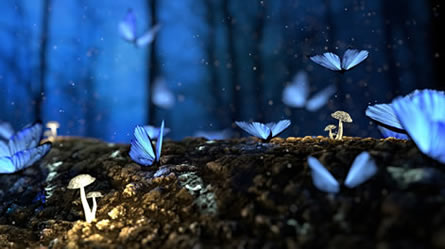
In Celtic mythology, fairies are enigmatic and enchanting figures whose magic and grace transcend the boundaries of the real world. Their origins are shrouded in the mists of time, imbuing Celtic folklore with their mystical and fairy-like presence. These anthropomorphic beings, often female, possess an enchanting power capable of subtly and profoundly influencing the fate of mortals.
In ancient tales, fairies are frequently depicted as guardians of nature’s forces, associated with ancient trees, tumultuous rivers, and shadowy glades. Their gifts are varied: they can bestow blessings upon newborns, perform miraculous healing, or cast enchanting spells at will. Their diaphanous wings, sometimes as delicate as flower petals, allow them to fly through the air, while their esoteric knowledge makes them formidable in the eyes of humans. Fairies are often portrayed wearing garments made of leaves and flowers, emphasizing their connection to nature.
However, the nature of fairies is ambivalent, swinging between benevolence and malice. Some are helpful and caring towards humans, guiding them through life’s journey or protecting them from the world’s dangers. They might also offer valuable advice or gifts in exchange for simple offerings. Others, however, take delight in playing cruel tricks, sowing chaos and confusion in their wake. They are known for their pranks and manipulations, creating situations where travelers lose their way or farmers find their crops mysteriously disappearing.
Deep forests, isolated glades, and sacred hills are often considered the favored abodes of fairies. Druids, keepers of ancient wisdom, know the sacred rituals to commune with these magical beings, respecting the natural sanctuaries where fairies reside in harmony with the surrounding ecosystem. Ancient stones, stone circles, and venerable trees are commonly associated with fairy encounters, and traditions advise not to disturb them to avoid their wrath.
In the Arthurian cycle, iconic figures such as Morgan le Fay and Viviane embody the power and mystique of fairies. Their influence on the destinies of the Knights of the Round Table reflects their importance in medieval mythology, where the boundaries between the mortal world and that of the fairies remain porous, imbued with mystery and wonder. Morgan, often depicted as a powerful and ambivalent fairy, and Viviane, the Lady of the Lake, whose role is crucial in Arthur’s destiny, illustrate how fairies can shape events and human lives in profound and complex ways.
In Irish legends, the Fomorians emerge from ancient tales like shadows from the past. Their origin is cloaked in mystery, with some considering them as hybrid beings, halfway between humanity and divinity, having emerged on Ireland’s green lands after the flood, a cataclysmic event marking a major turning point in the world’s mythological history.
In stories and legends, the Fomorians are often described with terrifying features: a single piercing eye, a powerful arm, and a dark leg. This depiction underscores their demonic nature and their deep connection to darkness. Their imposing stature, sometimes compared to giants, reinforces their image as formidable and threatening creatures that permeate the tales of their time.
As formidable warriors, the Fomorians fiercely battled other peoples of Ireland, particularly the Tuatha Dé Danann, in epic confrontations. These battles are often depicted in tales where the Fomorians spread terror and chaos in their wake. Their legendary battles, such as the Battle of Magh Tuiredh, have shaped the island’s history, influencing its inhabitants and leaving behind a legacy of legends and myths.
Despite their status as ruthless warriors, the Fomorians remain ambiguous figures in Irish mythology. Their nature and motivations are subject to interpretation. Some stories present them as almost tragic figures, victims of circumstances or curses.
It is essential to reserve a portion of our imagination for other, somewhat more familiar creatures, albeit briefly:
Dwarves, these small yet talented craftsmen, inhabit the depths of the earth. They guard their treasures and ancestral secrets jealously, often hidden in mysterious caverns. In Celtic mythology, as well as in Norse and Germanic tales, dwarves are renowned for their skills in smithing and metallurgy, creating artifacts of unparalleled power and beauty. Their existence evokes an underground world rich in mysteries and magic, where legends of artifacts like Thor’s hammer or magical rings blend with tales of lost knowledge.
Giants, on the other hand, occupy a unique place in legendary narratives. Their colossal size elevates them above mortals, and their titanic feats are often at the heart of myths, symbolizing raw power and the vastness of natural forces. Whether in Celtic mythology or Scandinavian tales, their presence serves as a reminder of the ongoing struggle between the forces of chaos and order.
Elves, graceful and ethereal, populate our dreams with their enchanting beauty and ancient wisdom. Their habitats in ancient forests and isolated glades reflect the intimate connection between humanity and the natural world. Their subtle magic, whether benevolent or capricious, inspires wonder and fascination. In Celtic folklore, elves are often associated with the Sidhe, fairy beings who guard the secrets of nature and ancient sacred places.
Gnomes and leprechauns, mischievous and playful, brighten our stories with their joyful presence. They bring laughter and good cheer, adding a touch of lightness and whimsy to our world. Their playful nature, while potentially troublesome, invites escape into a realm of mystery and humor, celebrating the beauty of small things and everyday wonder.
And how can we forget the illustrious Knights of the Round Table? These valiant heroes, whose epic deeds have shaped the collective imagination for centuries, embody the honor and bravery of a mythical age. Their epic quests, legendary battles, and the influence of Merlin, the wise enchanter, light their path with wisdom and magic. These tales, rooted in Arthurian traditions, remind us of the depth of medieval myths and their enduring influence.
Finally, iconic figures from modern fantasy literature, such as Gandalf from "The Lord of the Rings," resonate with the image of the druid. These characters embody ancient wisdom and magical power in a world beset by chaos. Their epic adventures and mythical encounters transport readers to an enchanting universe where the boundary between reality and imagination blurs, offering a refuge of wonder and escape.
To learn more about Celtic mythology, we recommend you the following books:
Celtic wedding theme
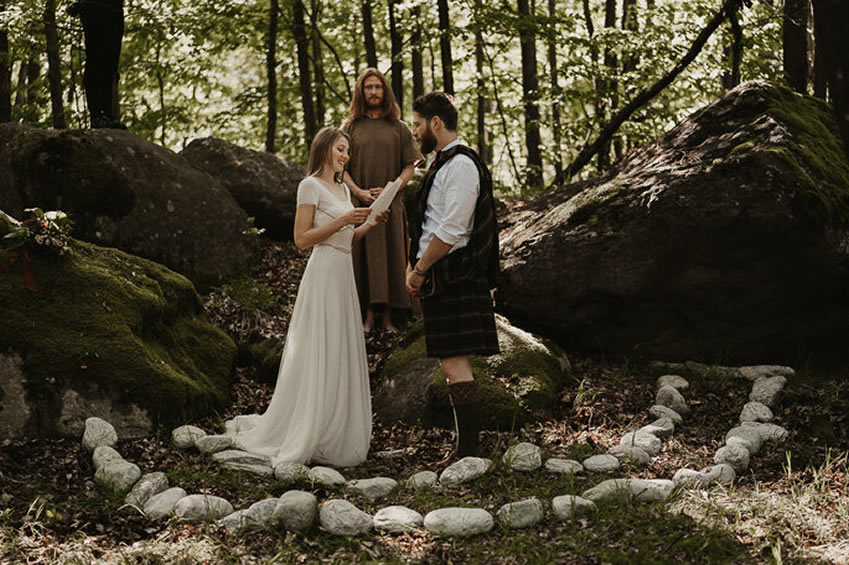
In our catalog, you will find a selection of jewelry, primarily featuring rings, specially designed for weddings inspired by the richness of tribal, Neolithic, Celtic, and druidic cultures. Each piece embodies the essence of these ancient traditions, capturing the spirit of nature, communion with the divine, and the legendary tales that have traversed the ages.
It is essential to distinguish between a Celtic wedding and a druidic wedding, as each carries distinct connotations. A Celtic wedding evokes a mystical ambiance infused with ancestral traditions, often marked by symbols related to nature and ancient beliefs. It reflects a deep cultural theme, inspired by verdant landscapes and the legends that animate Celtic imagination.
In contrast, a druidic wedding transcends the mere theme to become a true sacred union, often officiated by a druid or druidess. This ancient rite symbolizes a profound spiritual connection, sealing an eternal bond between the partners and the natural world. The druidic wedding is imbued with rites and ceremonies that honor the cycles of nature, the elements, and ancient deities, emphasizing the importance of harmony and respect towards natural forces.
Although Celtic sources and druidic ceremonies may sometimes be shrouded in mystery and fantasy, they embody an authentic connection with nature and the spiritual universe. These ancestral rites celebrate a precious harmony and sacred communion with the surrounding world, offering a unique and profound perspective on the union of souls.
We invite you to explore our collection to discover pieces that celebrate these rich and mysterious traditions and capture the timeless spirit of Celtic and druidic weddings.
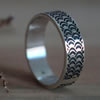
|
Melusine: this 6mm width ring refers to the fairy from the Celtic legends. |

|
The door of the past: this 10 mm width ring shows spirals and circles inspired by those discovered on the Neolithic megaliths. |
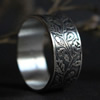
|
Oak leaves: this 10 mm width ring shows oak leaves, the most sacred tree for the druids. |
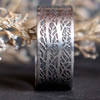
|
The song of the forest: this 10 mm width ring shows intertwined branches evoking the dense and secret forest of the druids. |
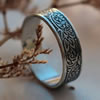
|
Briar rose: this 7mm width ring shows a medicinal plant used by druidic herbalists. |
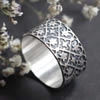
|
Ivy crown: this 10 mm width ring shows sacred ivy leave for the druids. You can also find this pattern on the ring Liseron with a narrower band. |
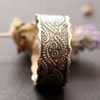
|
Fern: this 10 mm width ring shows fern leaves reminding of the plant used by the druids and the sacred forest. |
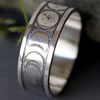
|
Phases of the moon: this 6mm width ring shows different phases of the moon during its cycle. It evokes the dear moon of the druids. |
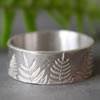
|
Raden: this 0.31 in (0.8 cm) width ring evokes the ferns of the forest of the druids. |
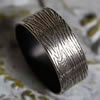
|
Wood: this 0.31 in (0.8 cm) width ring shows the lines of the tree wood to symbolize the link with the forest and its long history. |
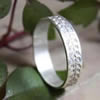
|
Ivy: this 4mm width ring celebrates the climbing plant used by the druids. |
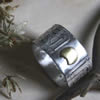
|
Stonehenge: this 11mm width ring shows Celtic knots, symbol of infinity and the moon. |
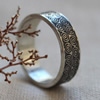
|
Triskel: This 6mm wide ring displays the famous symbol of three intertwined spirals used by the Celts. |

|
Birch: this 6mm width ring symbolizes one of the Celtic sacred trees. |
Outside of our expertise in jewelry crafting, we do not claim to be experts in wedding planning. However, we understand the importance of every detail in orchestrating your special day. To assist you in your quest for inspiration and support, please find below a list of valuable resources that could guide you in your search:
- All About Celtic Weddings- History, Handfasting And More!
- Planning a Celtic Wedding
- Celtic Wedding Ceremonies
- How to have a traditional Celtic wedding
- Celtic Weddings
- Druid wedding
- A Magic Celtic Druid Blessing on Lake Maggiore
- Druid Wedding at Stonehenge
- A druid wedding ritual
You can also start exploring the various products for your wedding:

